Join us for the first academic walkthrough of our exhibition programme as we welcome Marco Bohr, Associate Professor in Design and Digital Art at Nottingham School of Art & Design.
This event marks the beginning of a series of short, informal, academic-led talks and tours of the Bonington Gallery exhibition programme. These sessions provide our academic colleagues with an opportunity to share insights, spark discussion, and share research that resonates with the themes of our exhibitions.
Marco’s research is concerned with the role that images play in the shaping of a variety of discourses related to politics, gender, identity, sexuality, censorship, ethics and disasters. Drawing on his background as an exhibiting photographer, Marco’s research interest is principally focused on the photographic image — not only as a medium of visual expression but also as a research methodology and a tool for political activism.
Marco’s research interest also extends to visual propaganda, cinema, documentary and essay film. His book “Visual Counterculture in Japan” was recently published by Bloomsbury.
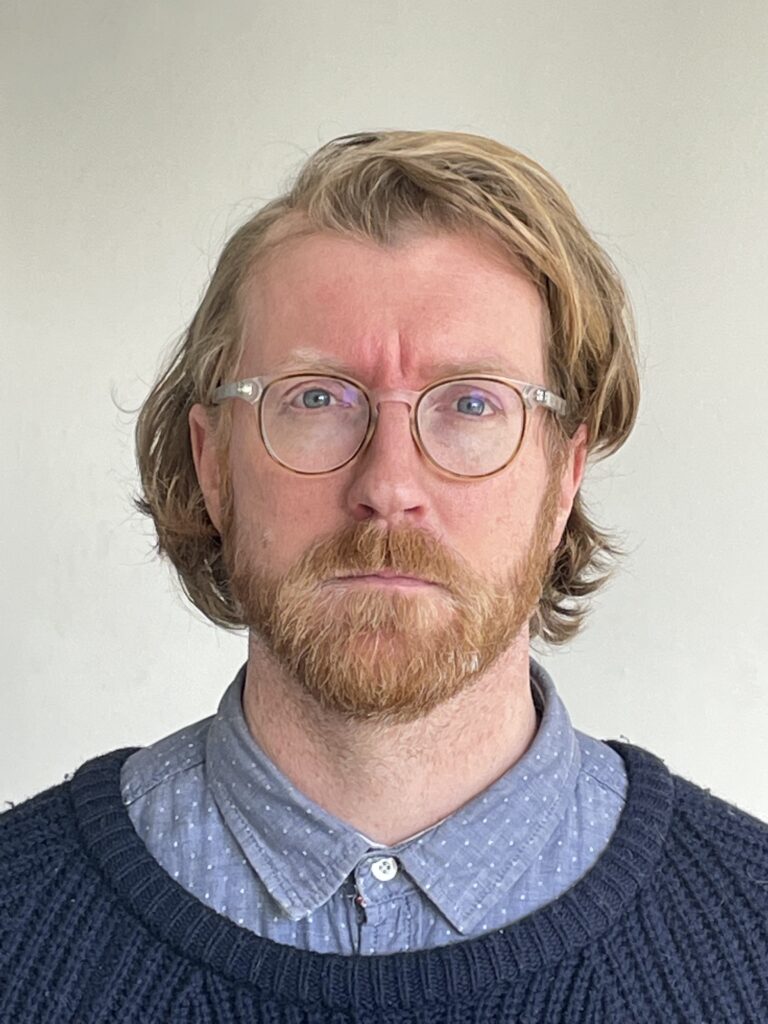
Bonington Gallery presents A Semester in Nottingham, 1976, an exhibition of photographs by Baltimore-based John Dean. Captured during his time as a visiting student to Nottingham Trent University (NTU) in 1976, these photographs offer a powerful glimpse into Nottingham life during a transformative era.
This exhibition marks a poignant return to the institution — formerly Trent Polytechnic — where John studied as a visiting student nearly fifty years ago.
Armed with a camera and a quiet curiosity, John immersed himself in the rhythms of Nottingham life. Over the course of a single semester, he wandered the city’s streets and parks — Hyson Green, Market Square, the Arboretum — capturing striking black-and-white portraits of residents going about their daily lives. The resulting images are both documentary and deeply personal, offering a rare and intimate glimpse into the everyday lives of Nottingham’s people during a transformative era.

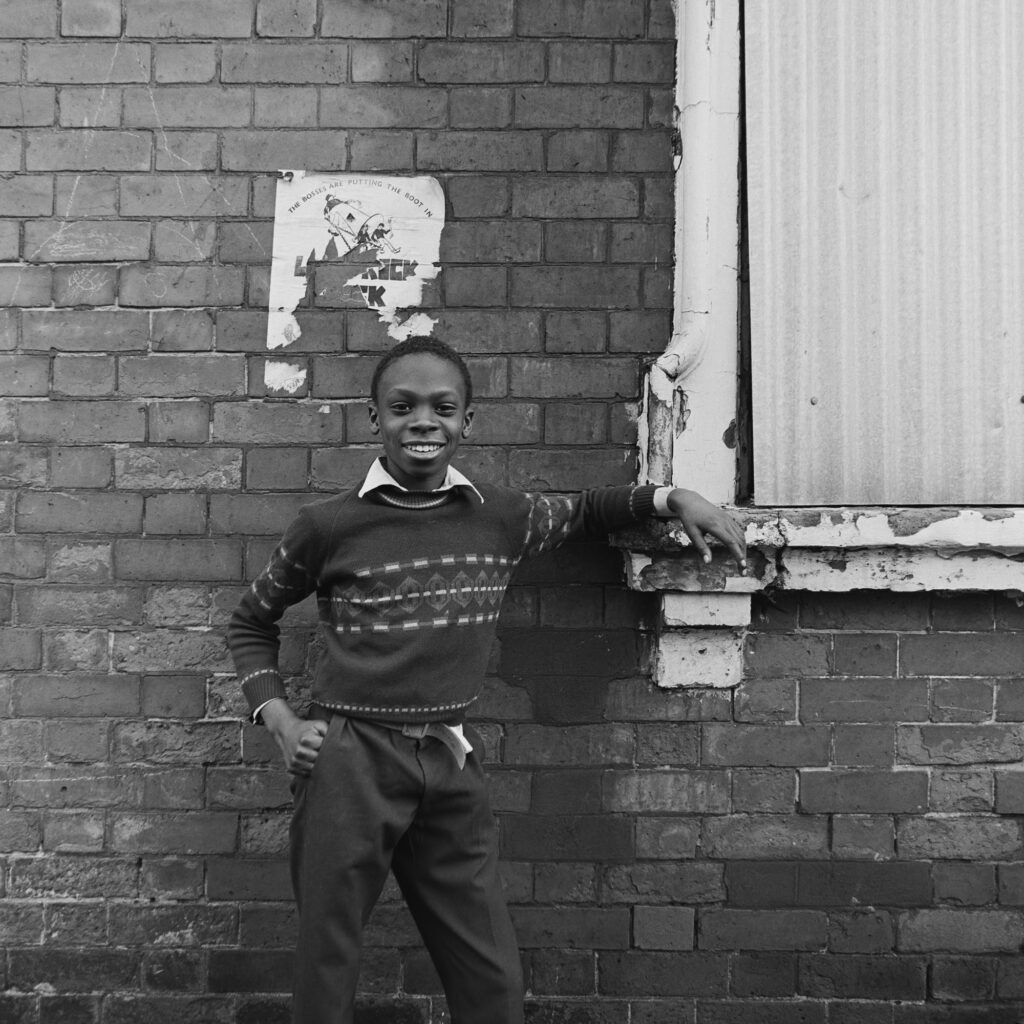
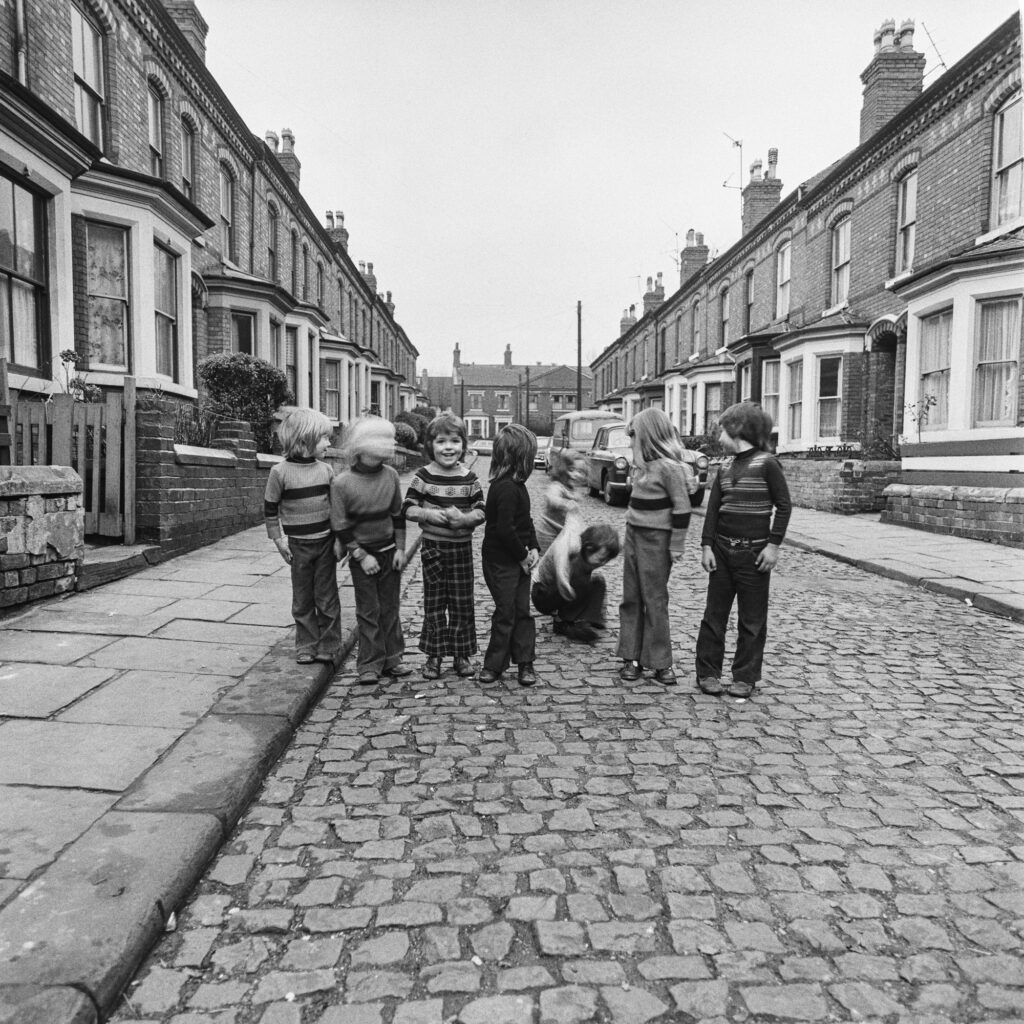
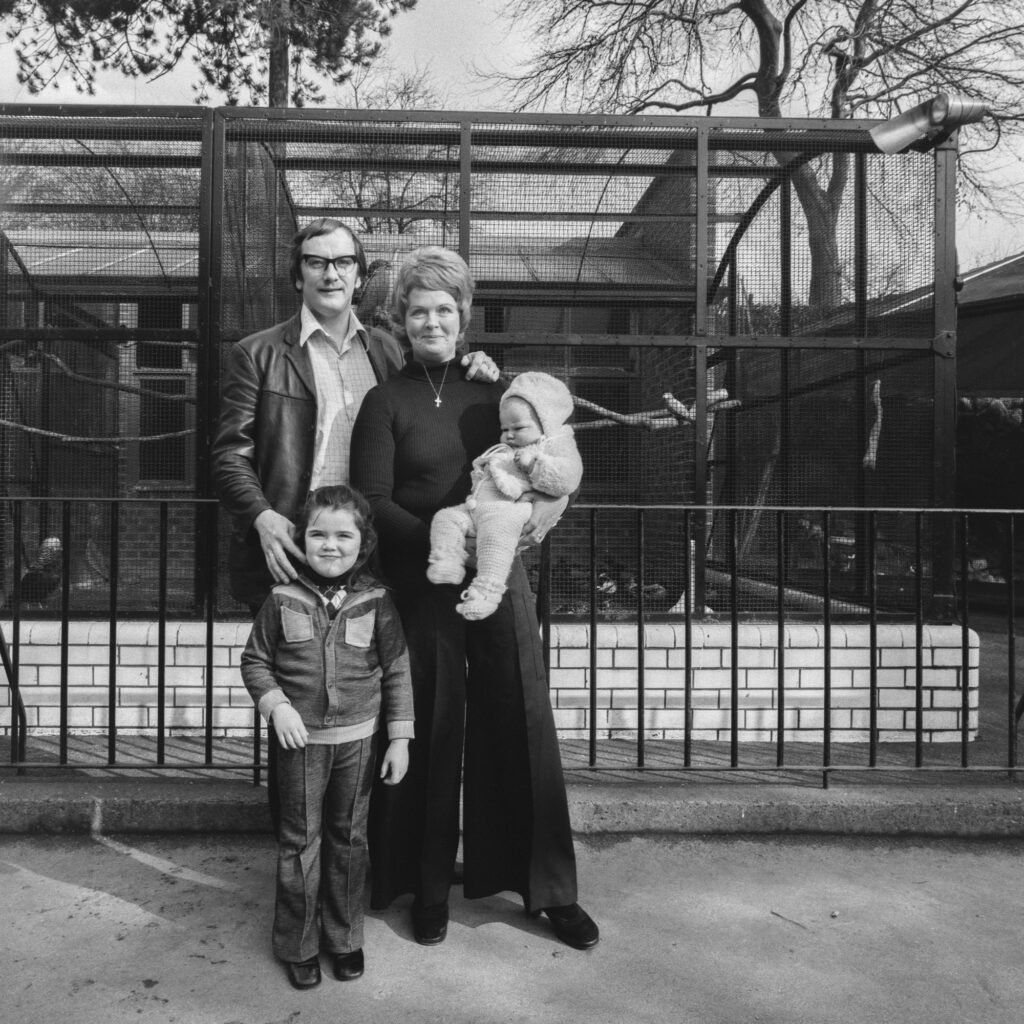
First developed in Trent’s own darkrooms (situated next door to the gallery), these photographs have remained largely unseen for decades. Now, they return to the place of their origin, standing as a testament to the power of observational storytelling, told through the eyes of a visitor to the city.
John has since built a distinguished career as a producer and videographer, creating historical and educational media for museums and non-profit organisations across the United States and beyond. Yet photography remains his first and most enduring creative language — a medium through which he continues to explore the intersections of memory, environment, and human experience.
John Dean is a Baltimore-based photographer, videographer who graduated with a BFA from the Maryland Institute College of Art. He regularly works with museums, non-profit organisations and editorial platforms on the creation of educational and historical media and content.
In addition to institutional work, John’s independent photographic practice has taken him across the world, exploring historic and cultural sites of significance, such as excavation sites in Greece and sacred spaces in Istanbul. As a long time mentor and arts advocate, John is consistently guided by a curiosity for human stories.
Bonington Gallery is delighted to present Through Our Eyes, In Our Words, an exhibition exploring stories of ageing, belonging, and inclusion among middle-aged and older-aged LGBT+ people in Britain.
What does it mean to belong? To grow older? To feel heard, seen, recognised?
Spanning LGBT+ History Month 2026, this exhibition from the IncludeAge project invites you to engage with the experiences of middle-aged and older-aged LGBT+ people in Britain today. Reflected through photographs, personal objects and testimony, LGBT+ people share what matters to them: the places they love and where they feel seen, and the everyday moments that shape who they are.
These artefacts don’t come from behind a lens held by someone else. They were taken by the people whose stories they tell. Some might identify as artists or creative practitioners, others not. Each photo and object is a choice – of what to show, how to show it, and what it means. Some speak of joy and celebration. Others quietly express frustration or longing—all of them reflect lives lived with strength, humour, creativity, and care.
The IncludeAge project (2022-26) explores experiences of inclusion and exclusion among diverse middle-aged and older aged people (40+), in physical places and online spaces..
The project specifically engages with LGBT+ individuals and people with learning disabilities. Its goal is to build on the insights shared by participants and use them to develop solutions that foster more inclusive communities.
The project is led by Professor Judith Sixsmith at the University of Dundee, in partnership with the University of Hertfordshire, Liverpool John Moores University, and the University of Edinburgh. Several organisations are also involved in the project, including Tonic Housing, Sleeping Giants, and Outside the Box, among others.
At Bonington during LGBT+ History Month 2026, Through Our Eyes / In Our Words showcases the richness of LGBT+ voices, histories, and imagery emerging through the project. Exhibitions elsewhere in the country will showcase material relating to the participants with learning disabilities.
For more information, please contact Dr Richard Vytniorgu (r.vytniorgu@herts.ac.uk).
Photo: Rosie Gardener
For the 28th instalment of the Bonington Vitrines series, we’re delighted to present Someone’s Doing Something, a project by London based curatorial, research and archival platform Gestures, developed in dialogue with writer Isabelle Bucklow.
This project, featuring artists such as Stuart Sherman, Simon Moretti, and Yvonne Rainer, will present a selection of work that explores gesture as a form of artistic expression. Whilst some gestures are recorded through notation or residue, others survive only in documentation or retelling.
The works in Someone’s Doing Something reflect a broad range of these approaches, from the formal to the informal, the scripted to the instinctive, and considers these against shifting times and contexts.
In considering the location of the Bonington Vitrines, as a space that is moved through by 100’s of people each day going about their daily business, this quote by theatre director Peter Brook is considered:
“I can take any empty space and call it a bare stage. A man walks across this empty space whilst someone else is watching him, and this is all that is needed for an act of theatre to be engaged” – Peter Brook.
Full list of artists: Simon Moretti, Allan Kaprow, Richard Schechner, Charlotte Moorman, Nam June Paik and Yoshi Wada, Mieko Shiomi, Sue Tompkins, Bruce McLean, Bruce Gilbert, with Angela Conway and Michael Clark, Stuart Sherman, Anastasia Coope, Yvonne Rainer, Ricky Jay.
Gestures is a London based curatorial, research and archival platform that has organised exhibitions, interventions and projects in locations as diverse as sidewalks in New York and Travelodge hotel rooms, as well as exhibition spaces such as the Postal Museum in London and 47 Bedford Street in London.
Gestures is currently conducting long term research into Situation, a space in London that existed in the 1970s that did early exhibitions with artists including On Kawara, Bruce McLean and Bas Jan Ader.
Along with colleagues WC2E9HA, The Everyday Press aka Bunker Basement and Whatever Anderson, Gestures will open the shared exhibition space Chequers in Summer 2025.
View checklist and text by Isabelle Bucklow here.
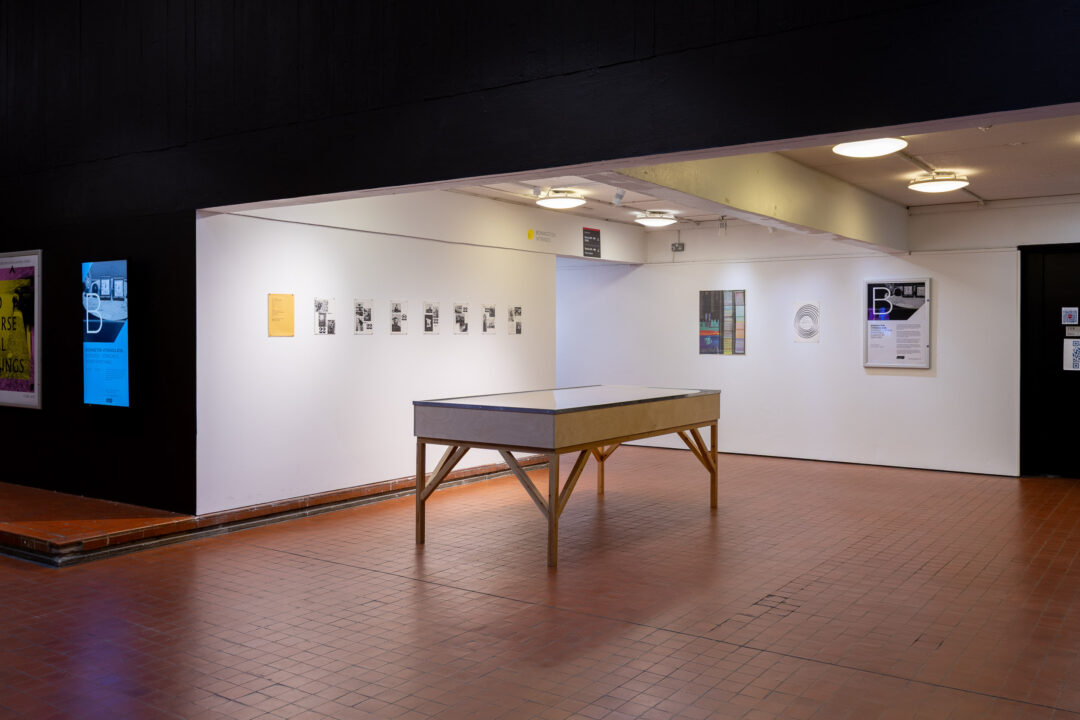
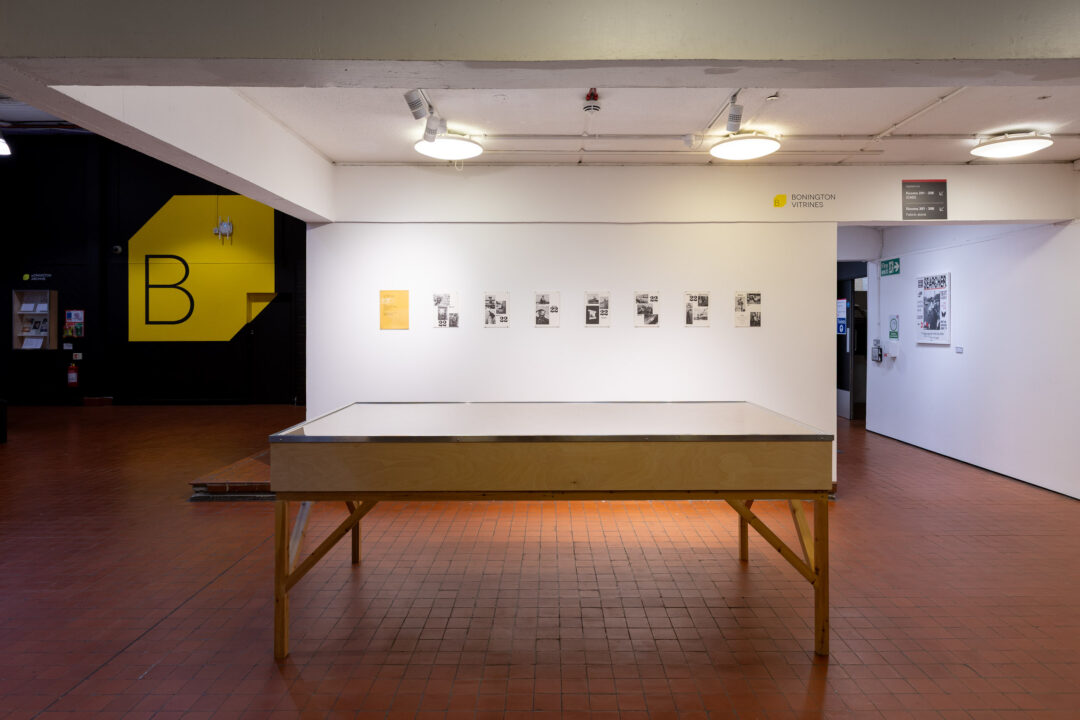
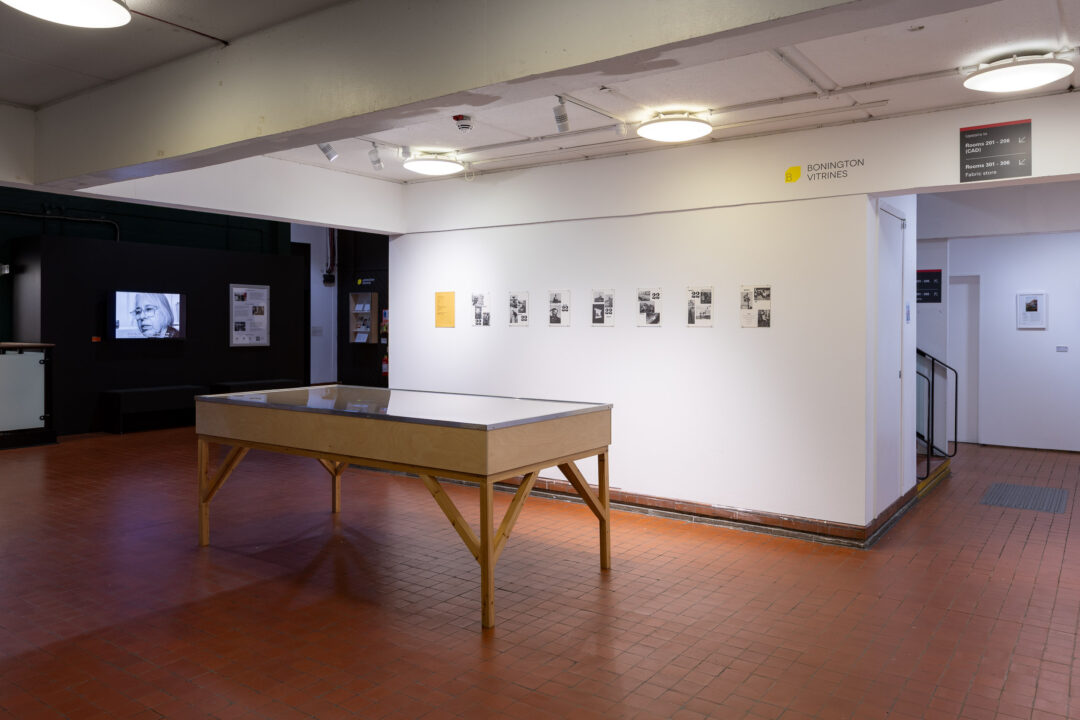
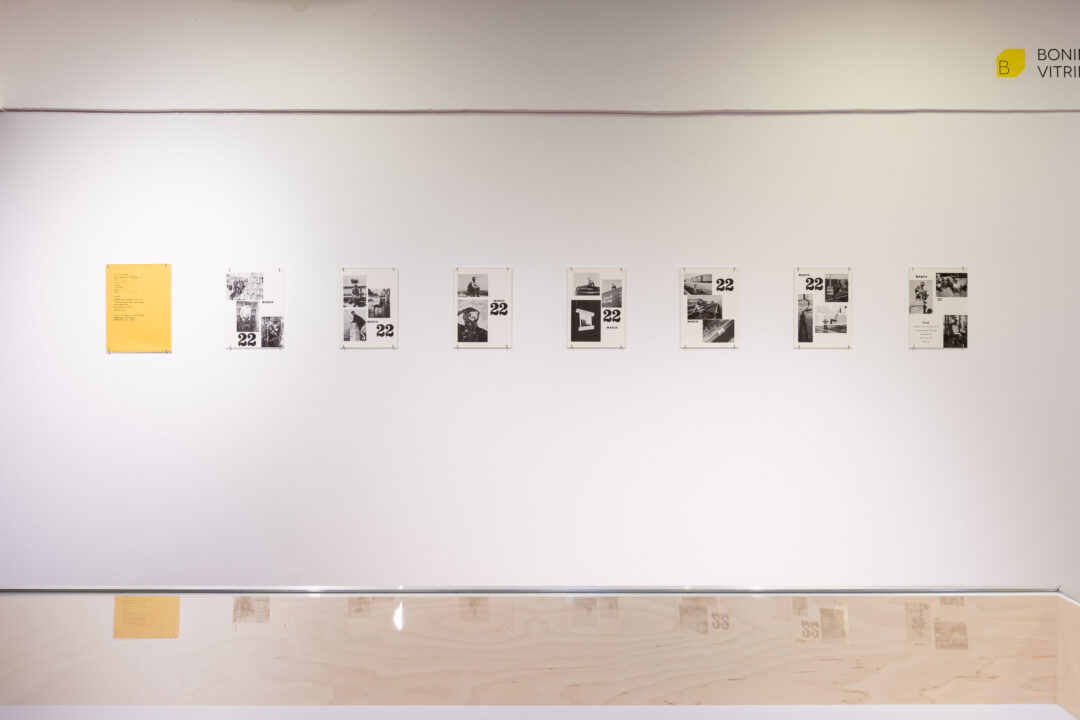
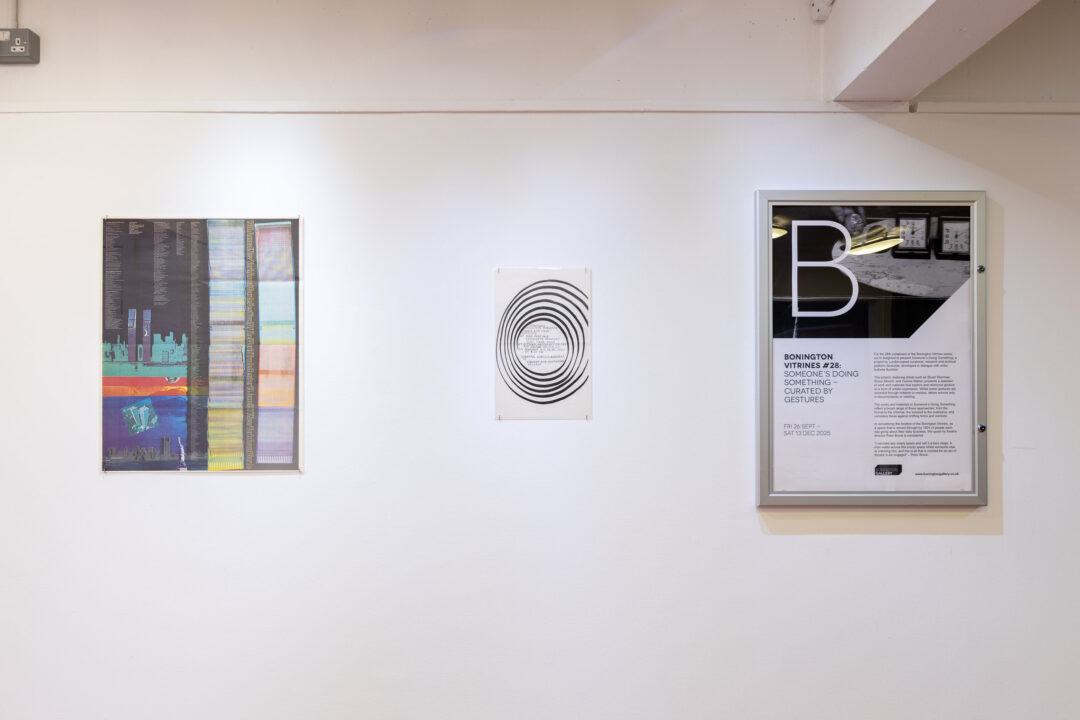
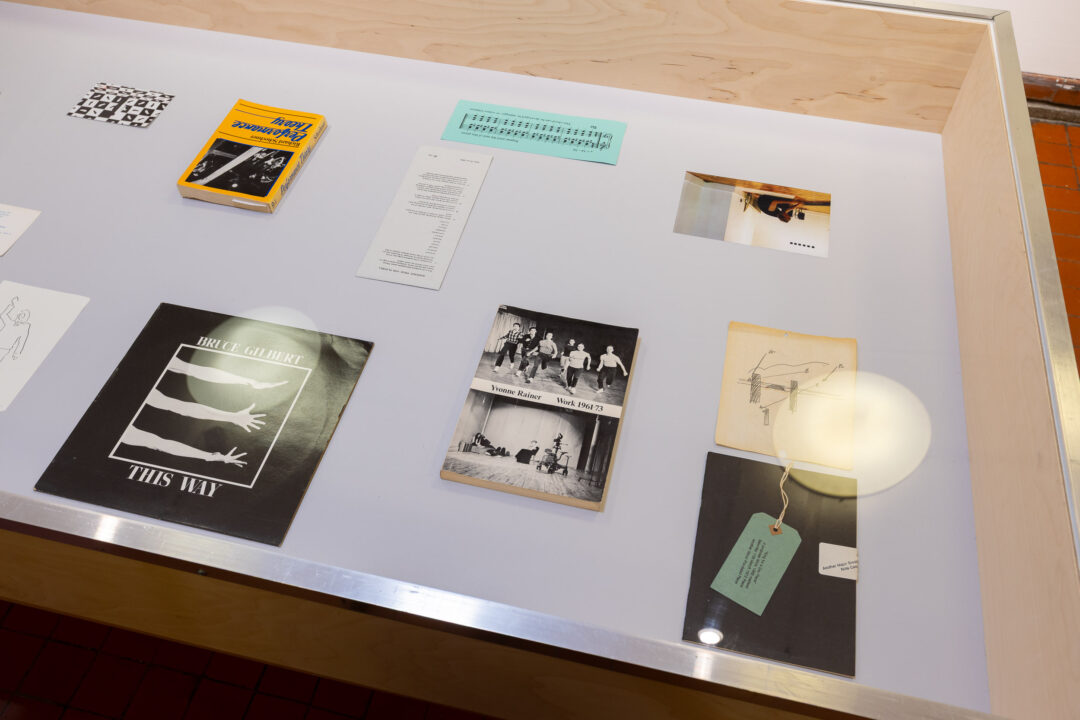
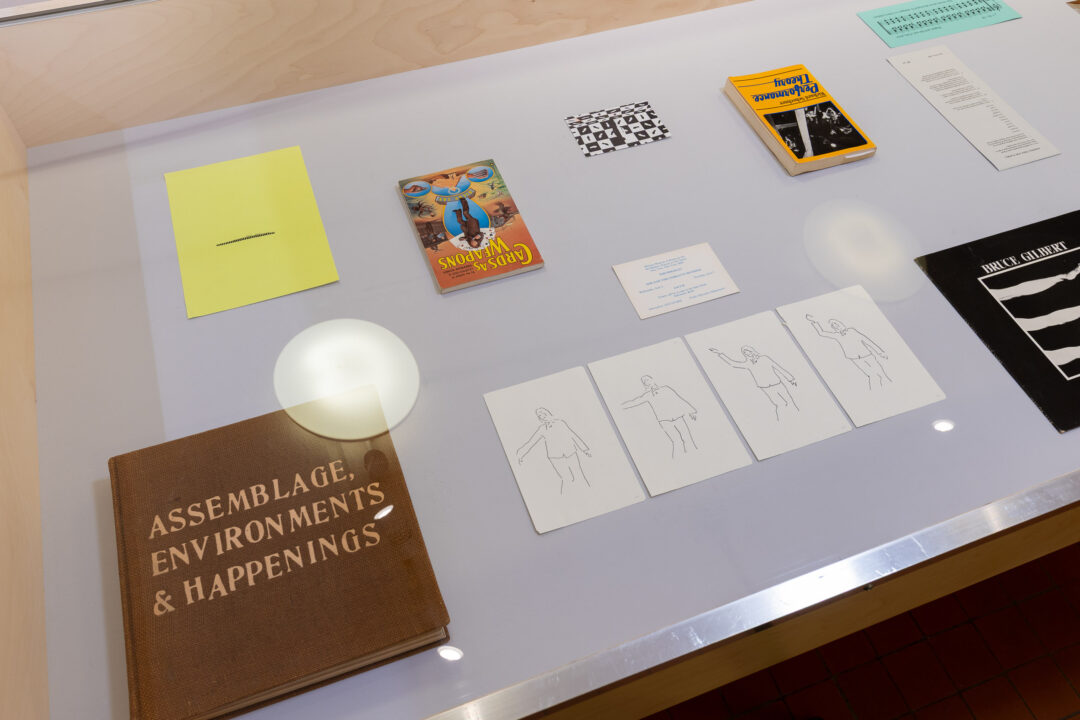
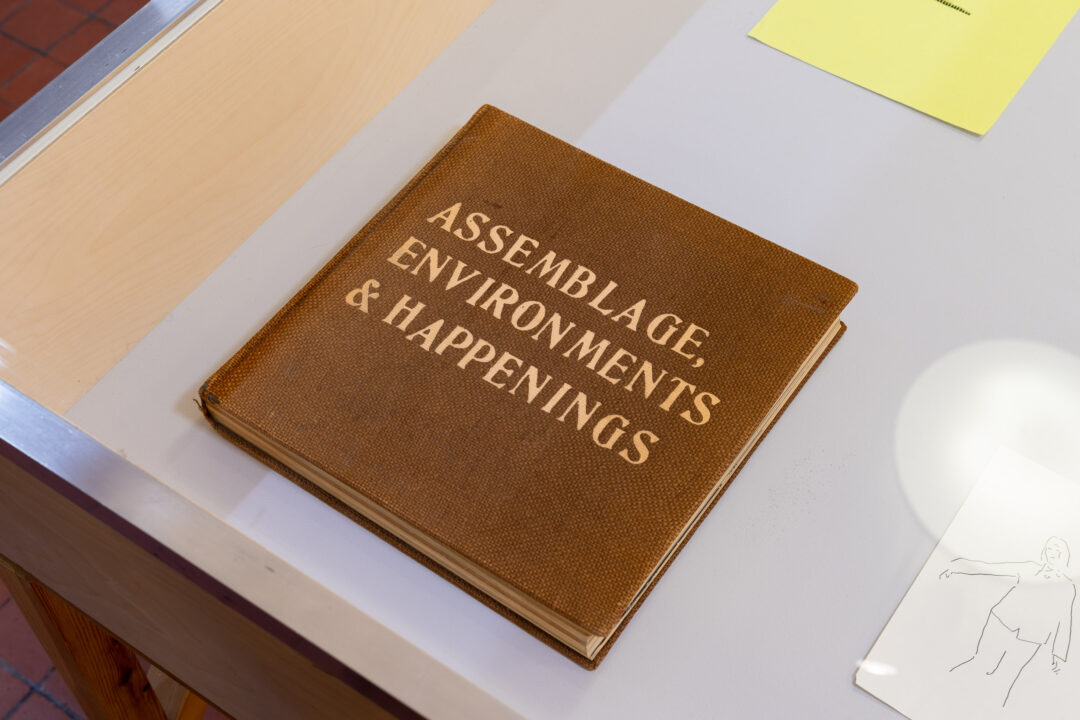
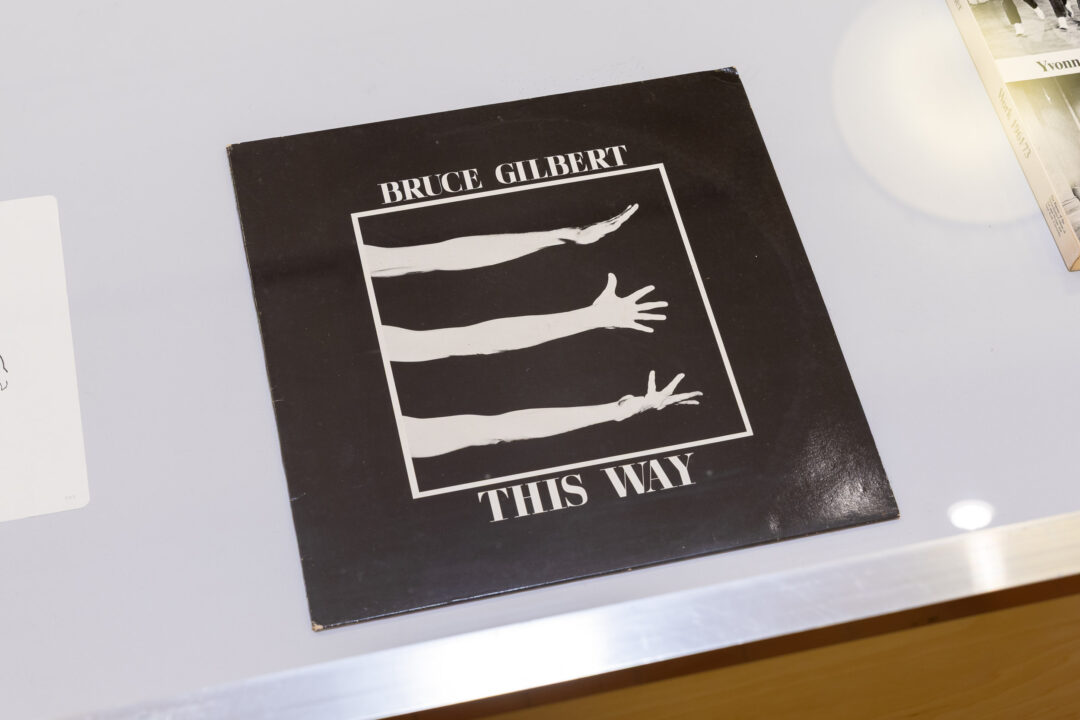
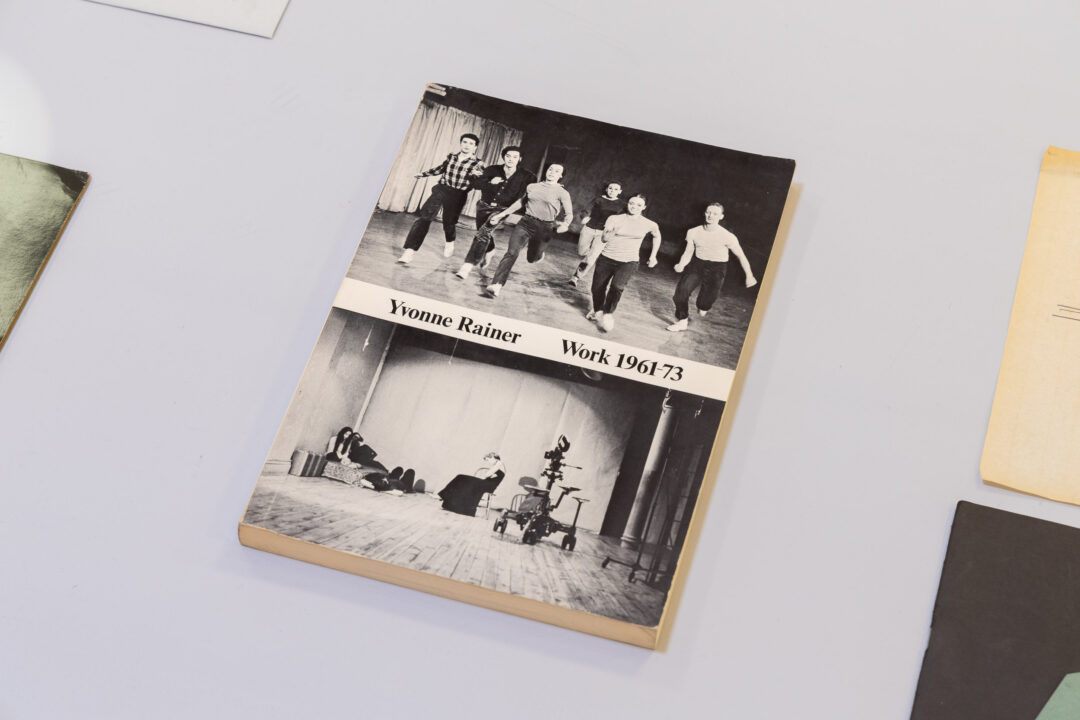
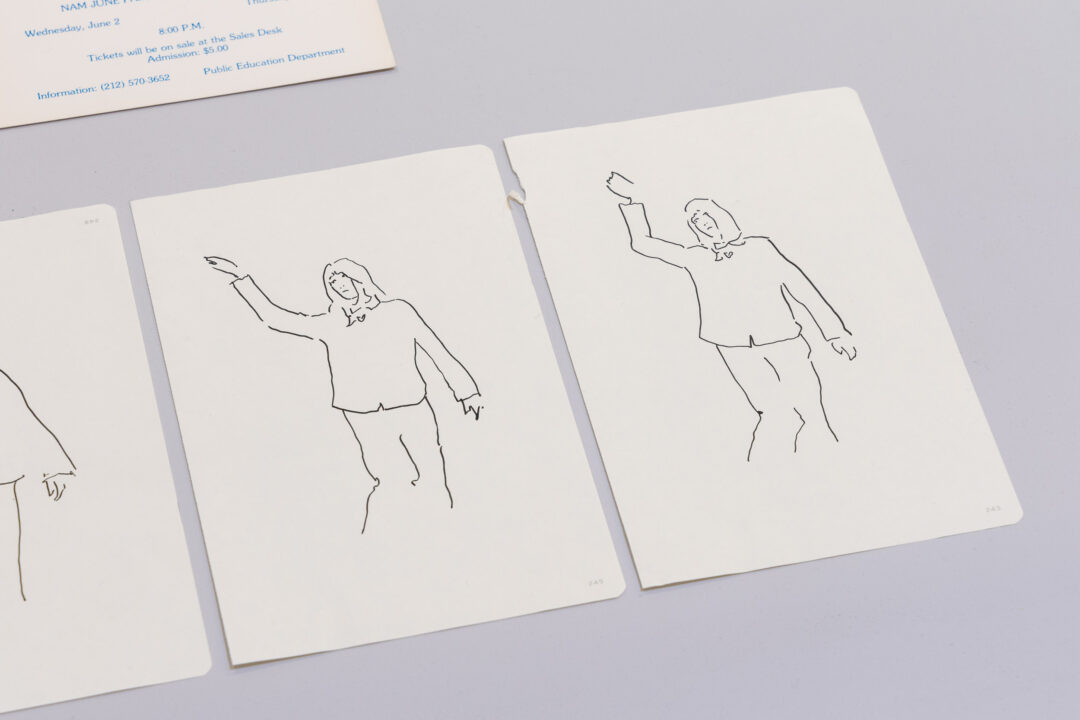
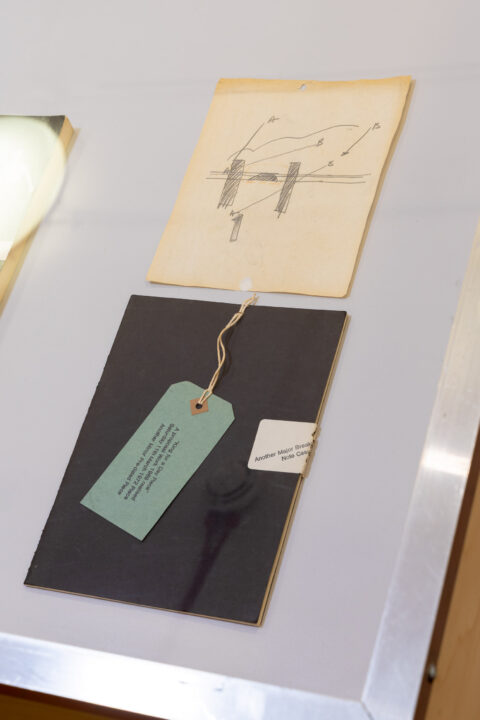
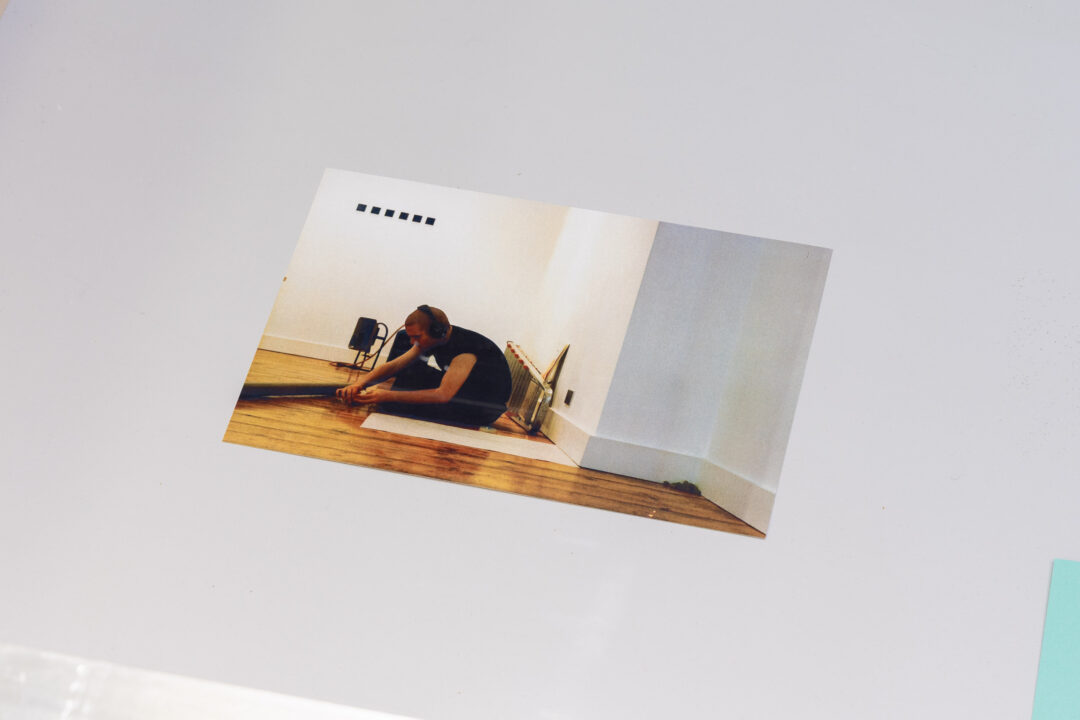
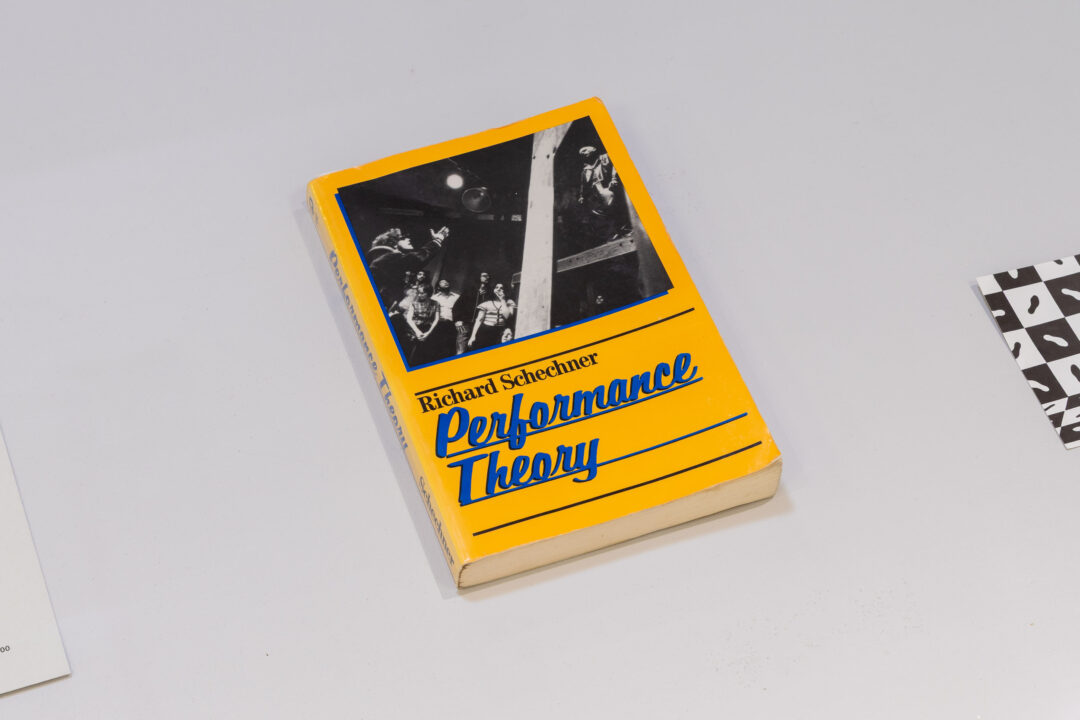

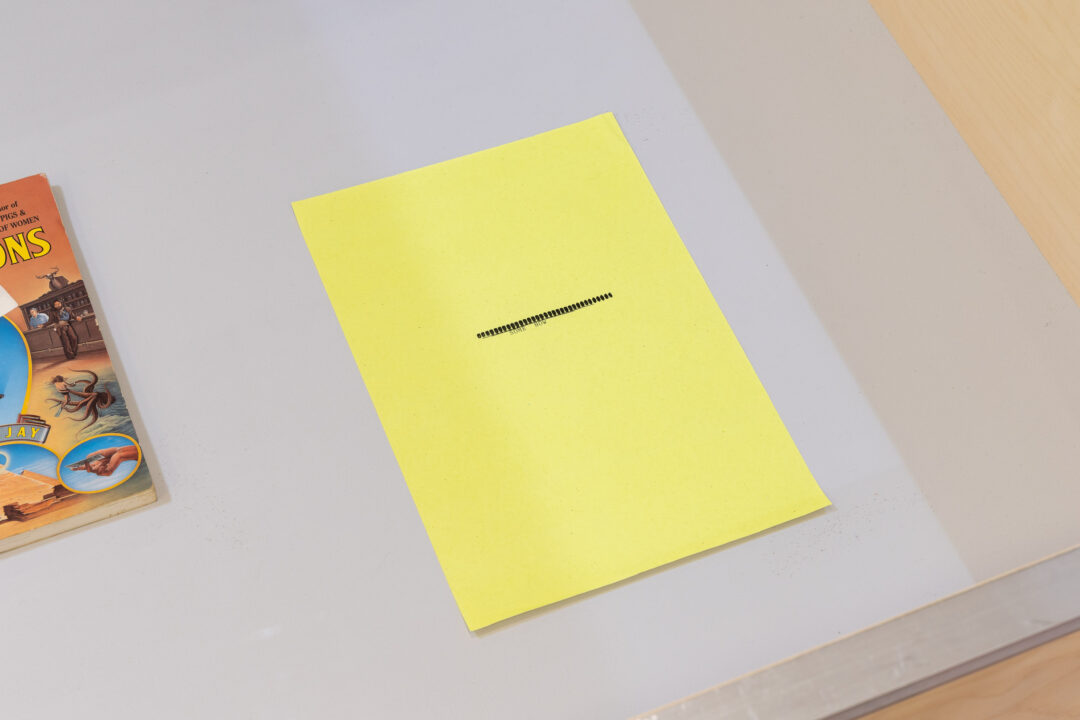
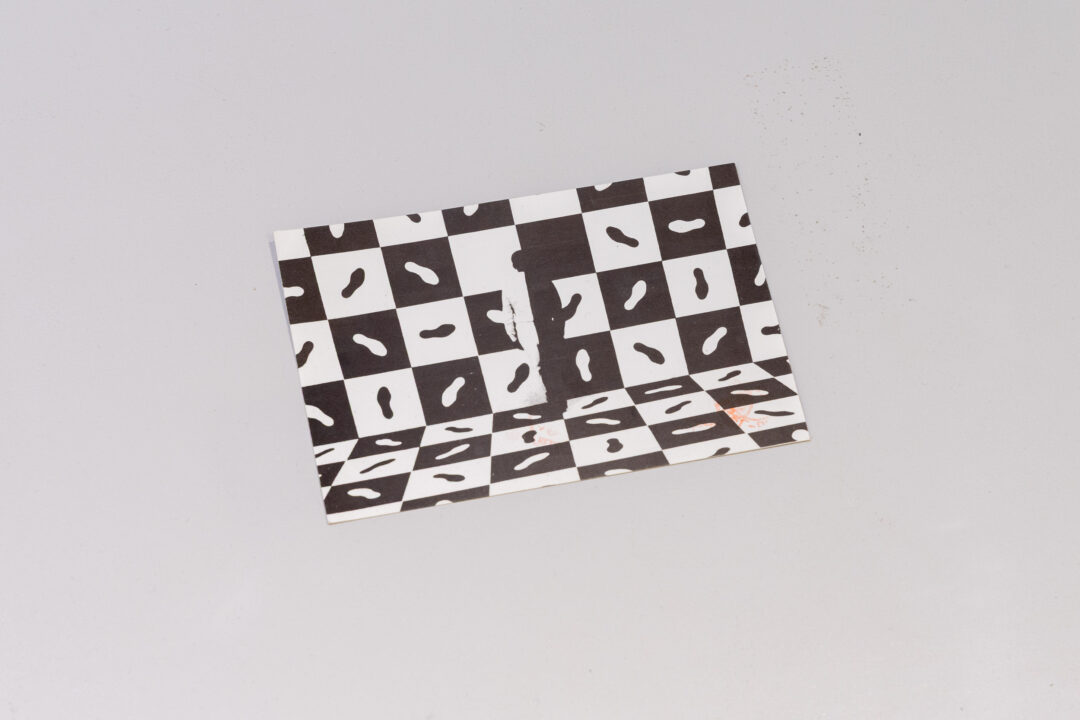
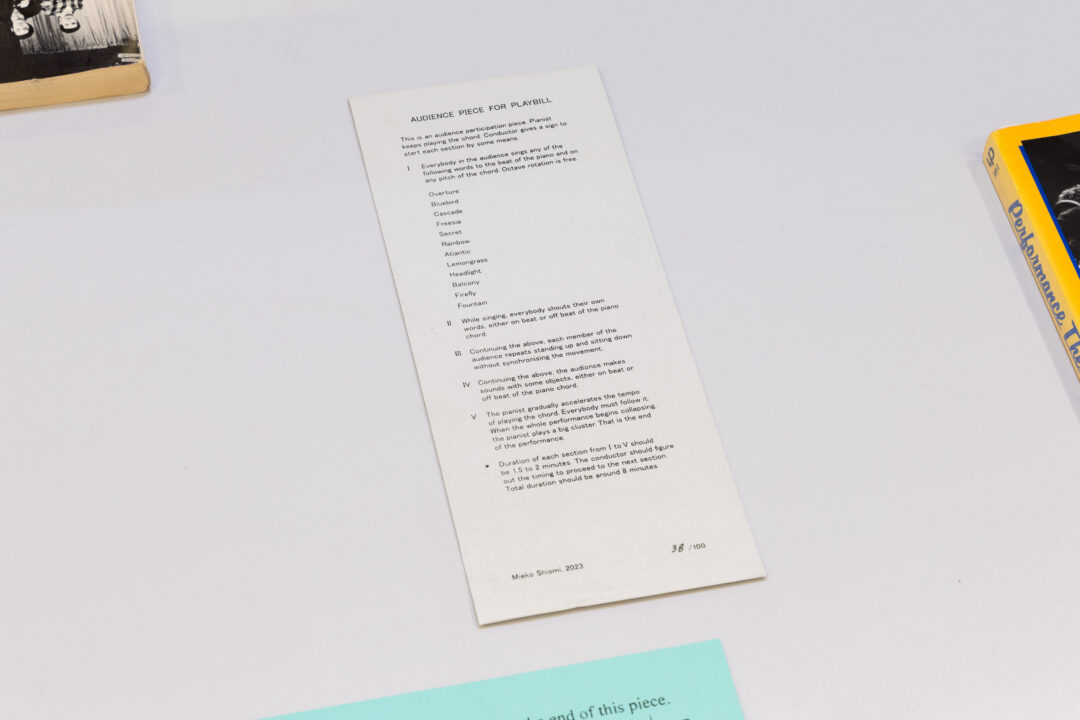
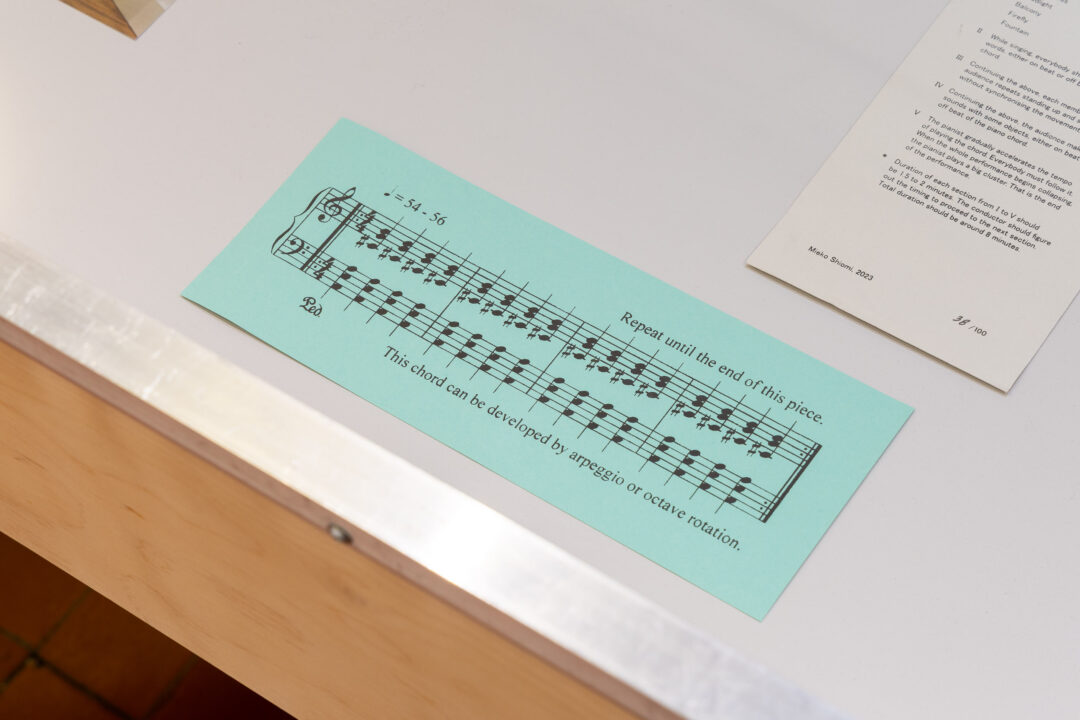
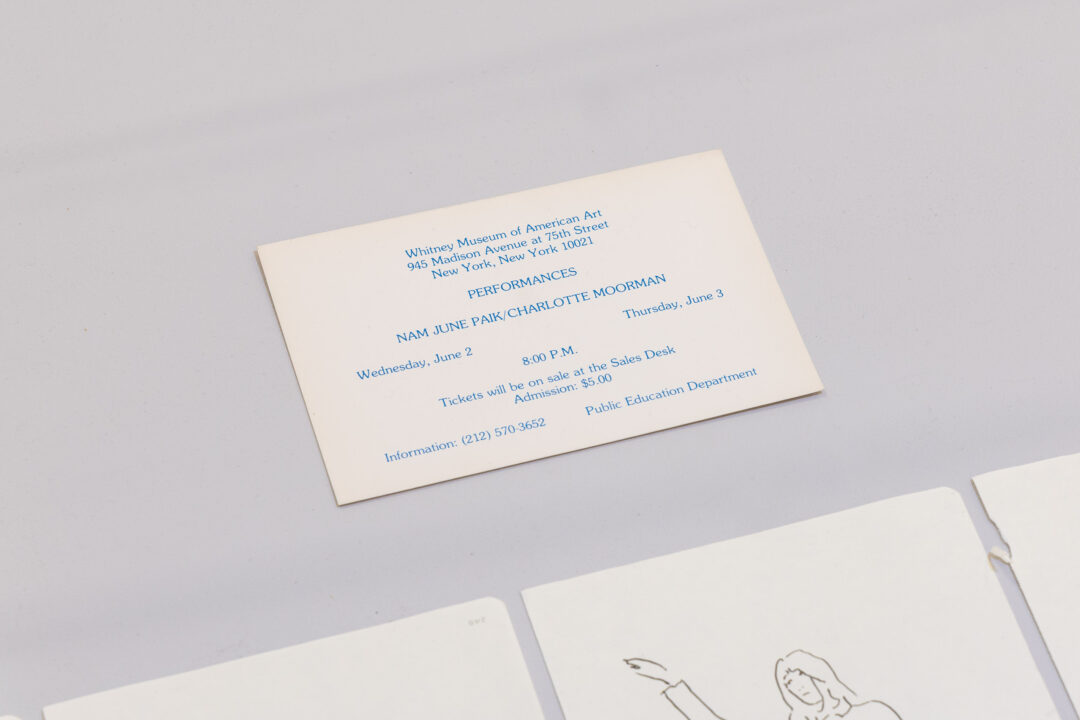

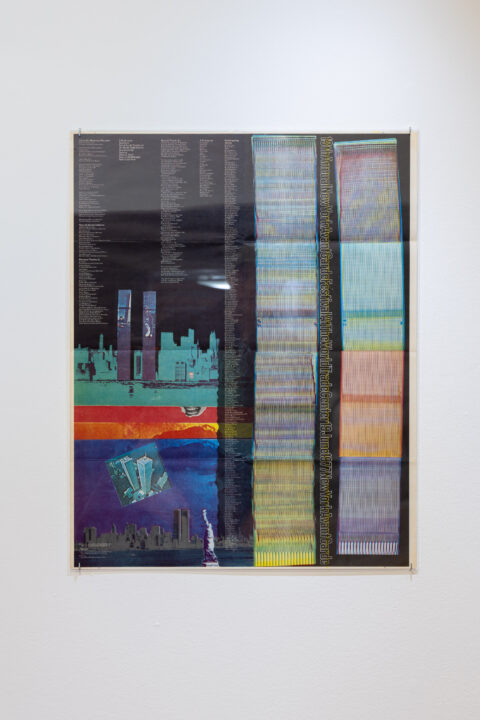
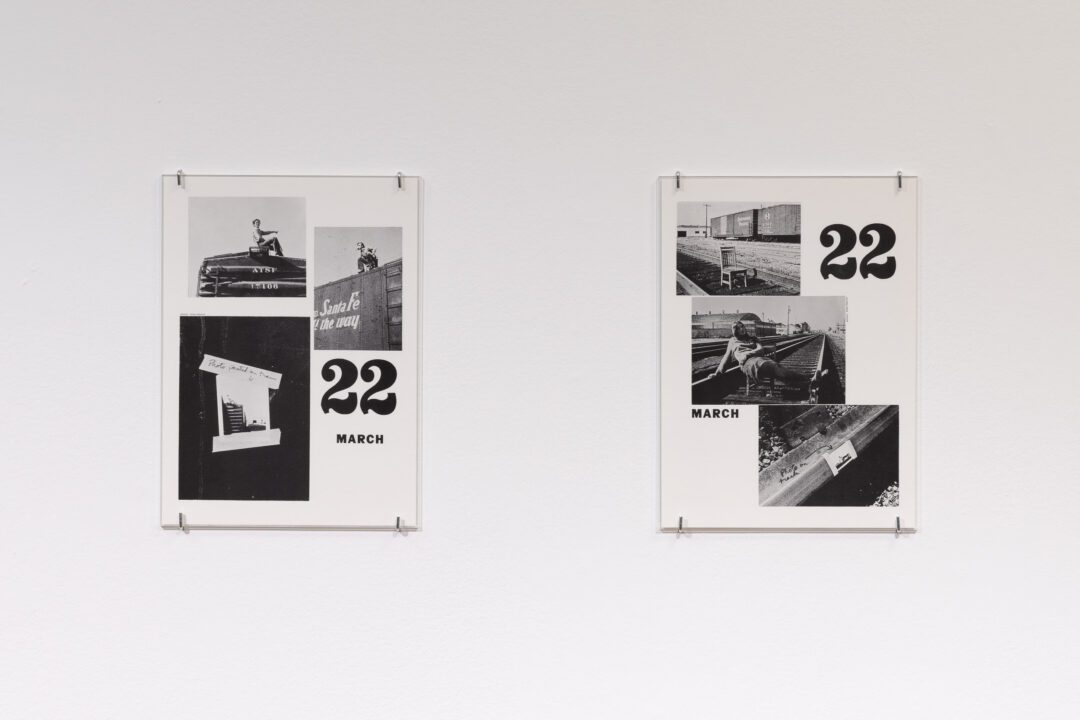
Image credit: Stuart Sherman, The Twelfth Spectacle (Language), photo by Nathaniel Tileston, 1980, as included in The Stuart Sherman Papers, 2025.
We are delighted to be dedicating the final Vitrines instalment of our 2024/25 season to archive material, information and clothing that documents the dynamism of the independent fashion scene of Nottingham in the 1980s.
In the years following Beeston-born Sir Paul Smith’s ascendency from a 3x3m store on Byard Lane in 1974 – to bases in London, Paris and Tokyo – many local fashion brands were established, including several by graduates from ‘Trent Poly’, who bucked the moving-to-London trend by committing themselves to the city and starting a new generation of independent labels. Homegrown brands such as G Force, Olto, Vaughan & Franks, Katsu and Cocky’s Shed were a just a few…
These brands combined talent, style discernment, DIY attitudes and cheap rents to start labels, open shops, and form global influence and connection. At one point the city even gained its own style pages in the form of Déspatch, Relay and Débris magazines, providing content as broad ranging as fashion editorial featuring local and international designers, montages of nights at The Garage, and signposting visitors to the shops and studios that were physically and ideologically a long way from the High Street.
The fashion scene that developed placed equal importance on both studio and social time, building a network of close-knit creatives who collaborated and supported one another. This community incapsulated many of the same qualities that gave rise to other significant, and perhaps more well-known cultural communities such as the city’s music, cinema and contemporary art scenes.
The aim of this presentation is to celebrate and help establish a legacy for this important period within the city’s [sub]cultural history. An open call for materials will run in the lead-up and during the exhibition, allowing anyone to submit related materials that will join the exhibition and evolving noticeboard.
Accompanying the exhibition is a suite of specially commissioned essays by independent scholar Ian Trowell. Ian has also provided curatorial consultancy and research to this project, having interviewed several of the key protagonists of that era. Ian writes on subjects including UK subcultures, music, fashion, popular culture, art and media. His book Throbbing Gristle: An Endless Discontent was published by Intellect Books in 2023.
This exhibition has been co-curated with Dr Katherine Townsend, a researcher, educator, practitioner and Professor in Fashion and Textile Practice in the Fashion, Textiles and Knitwear department in the School of Art and Design at Nottingham Trent University.
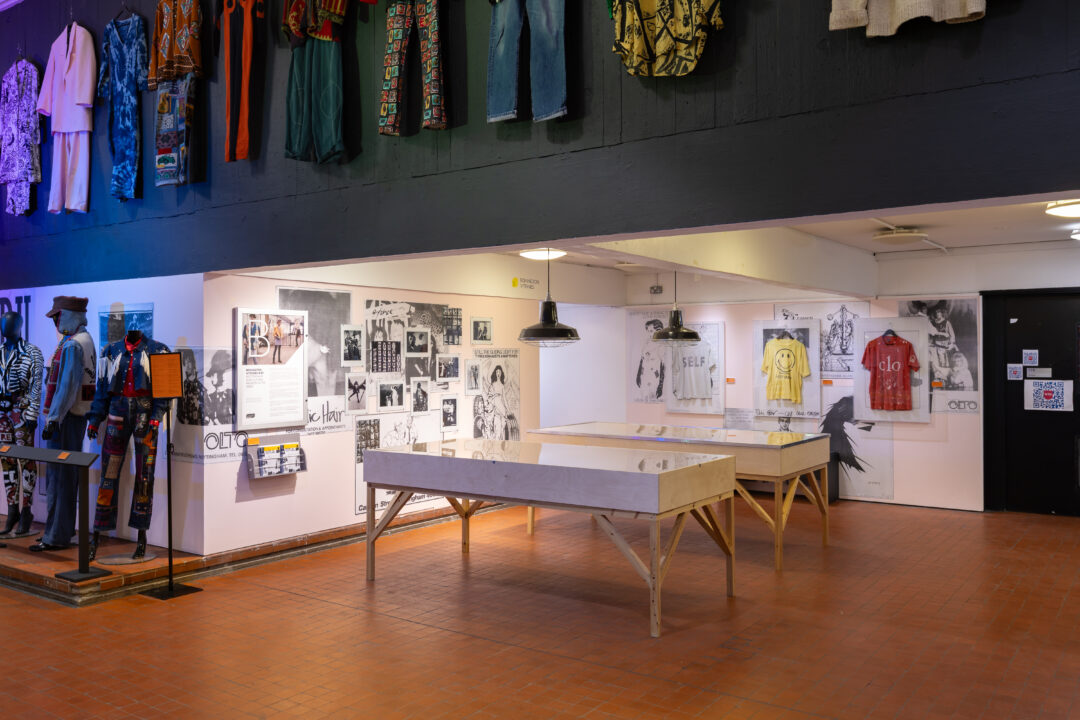
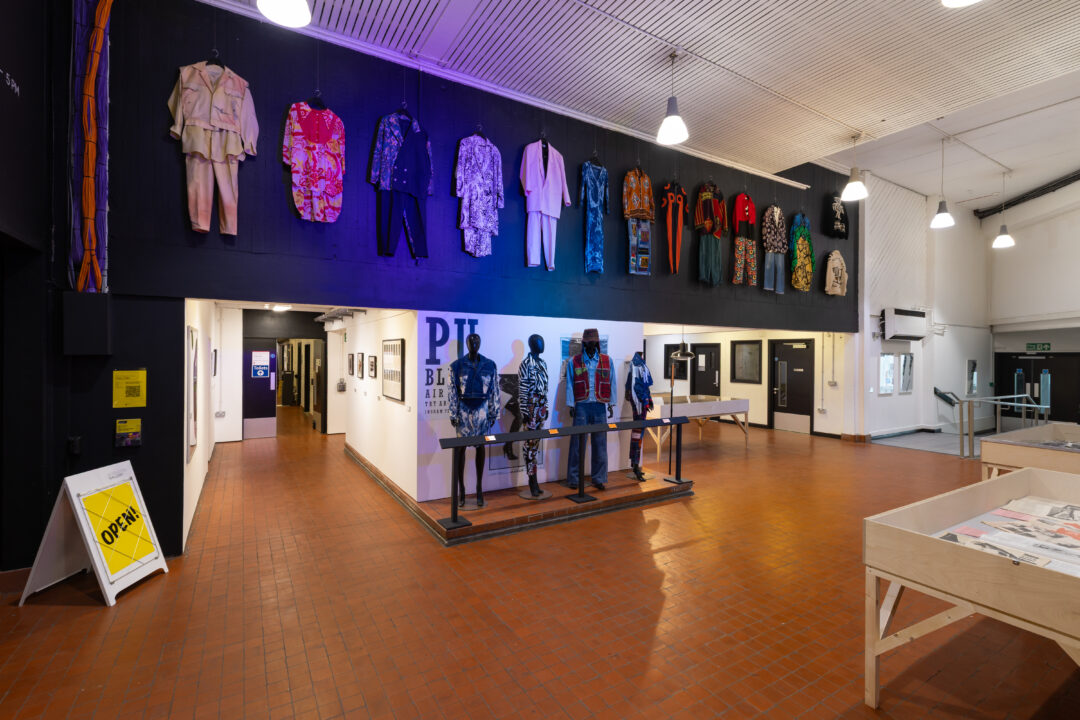
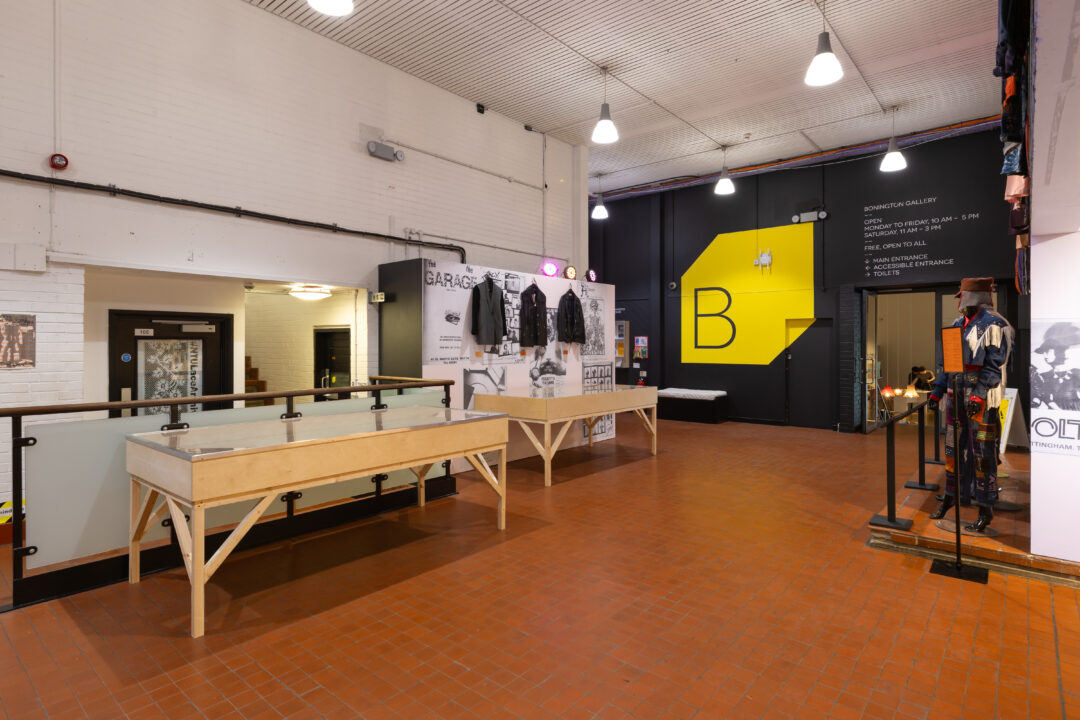
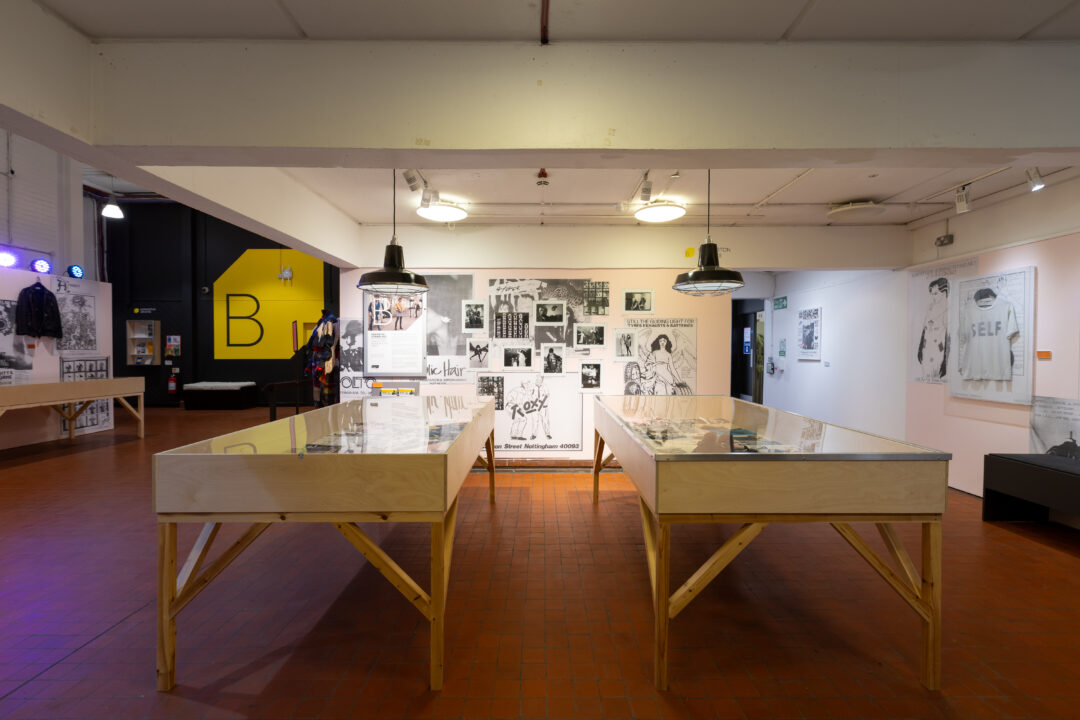
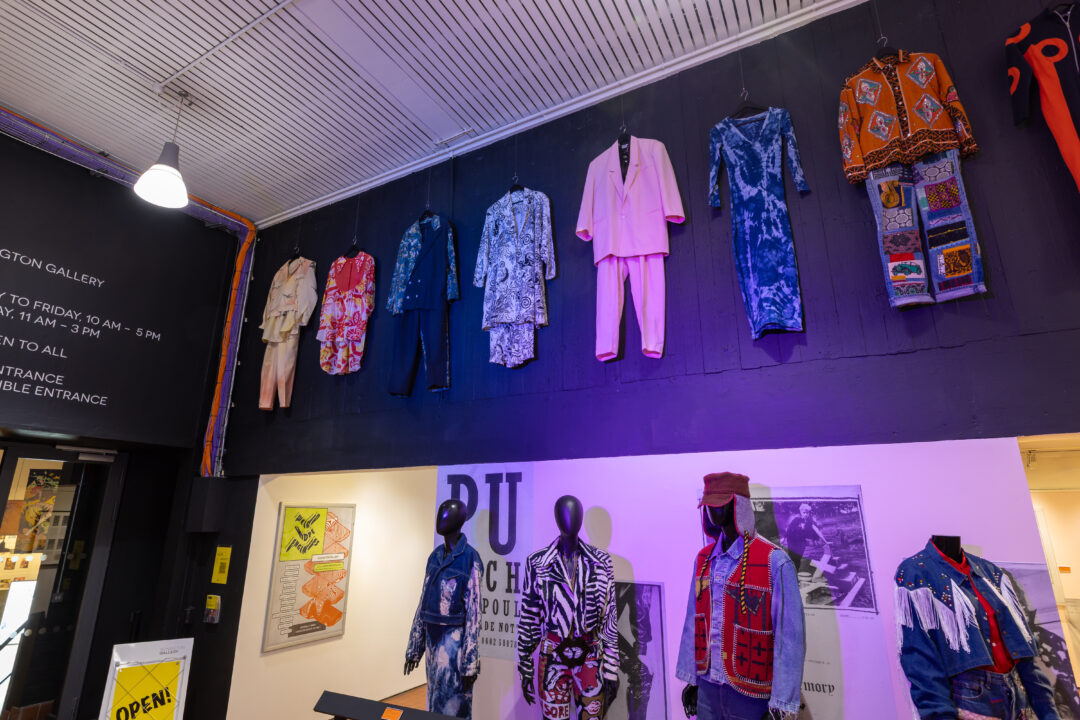

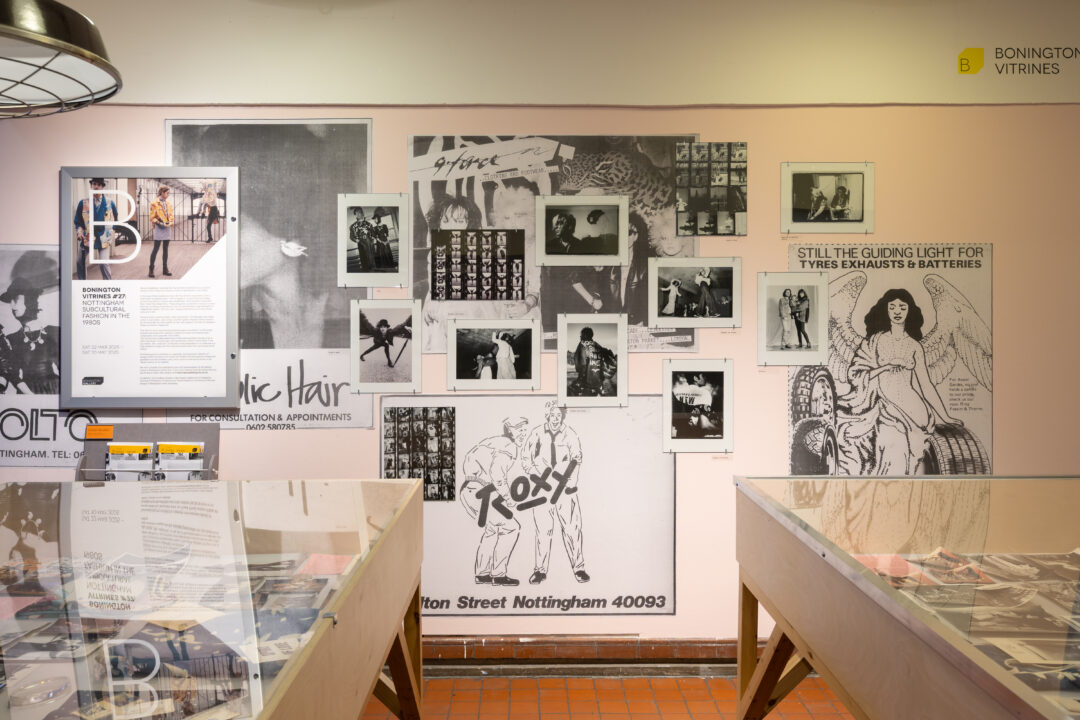
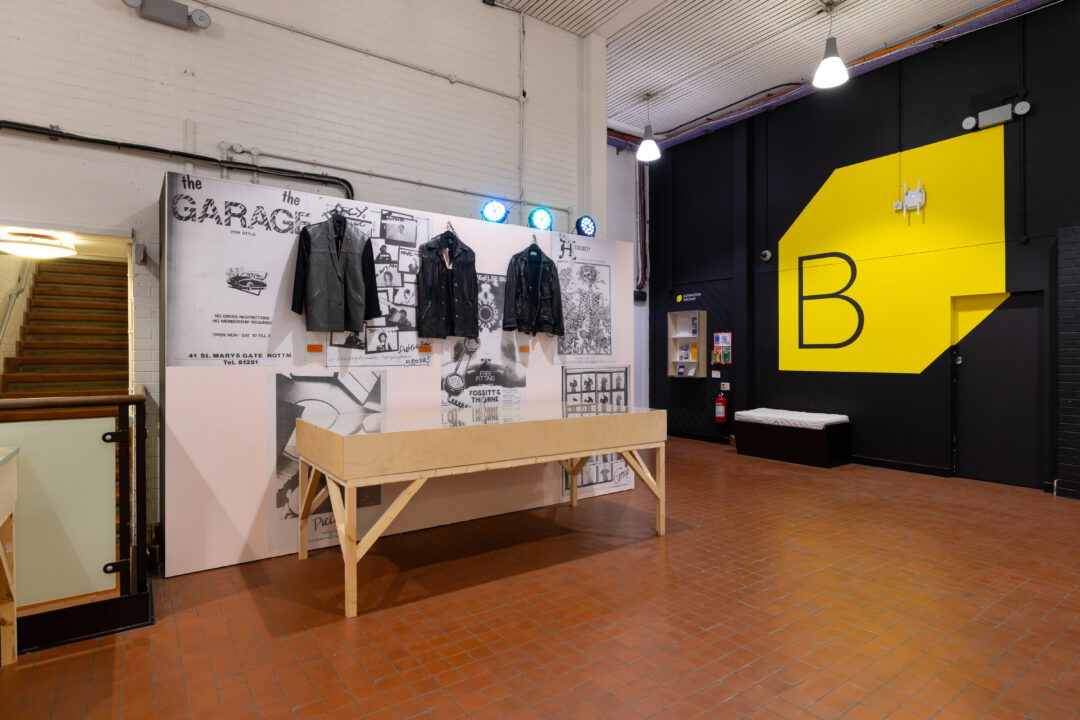
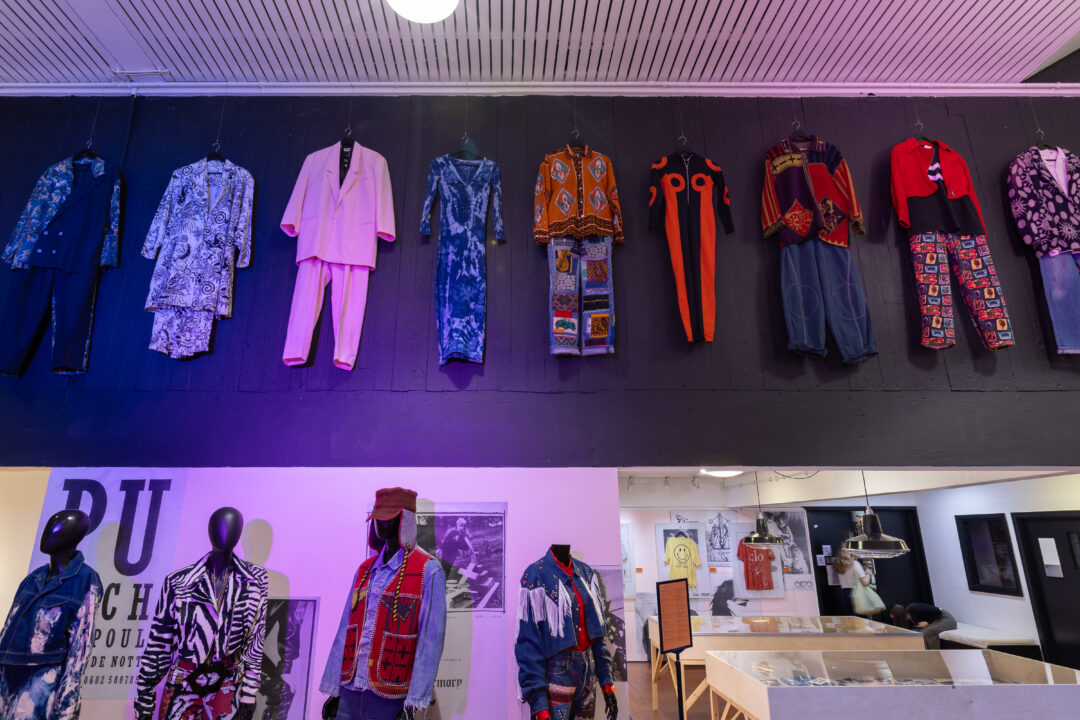
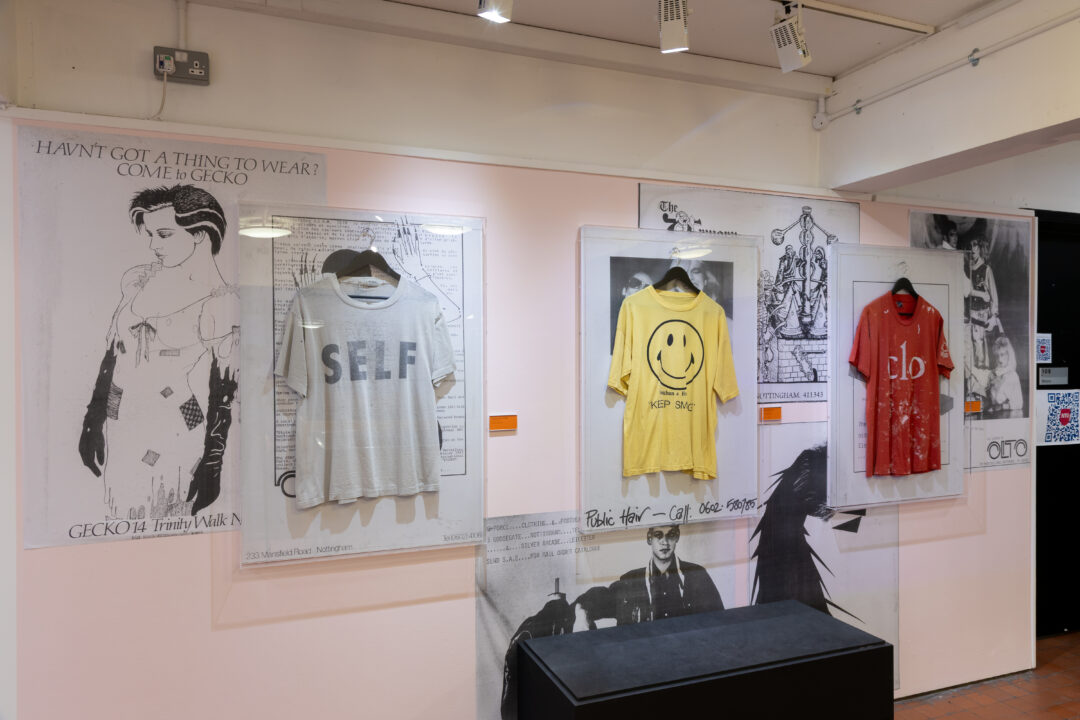
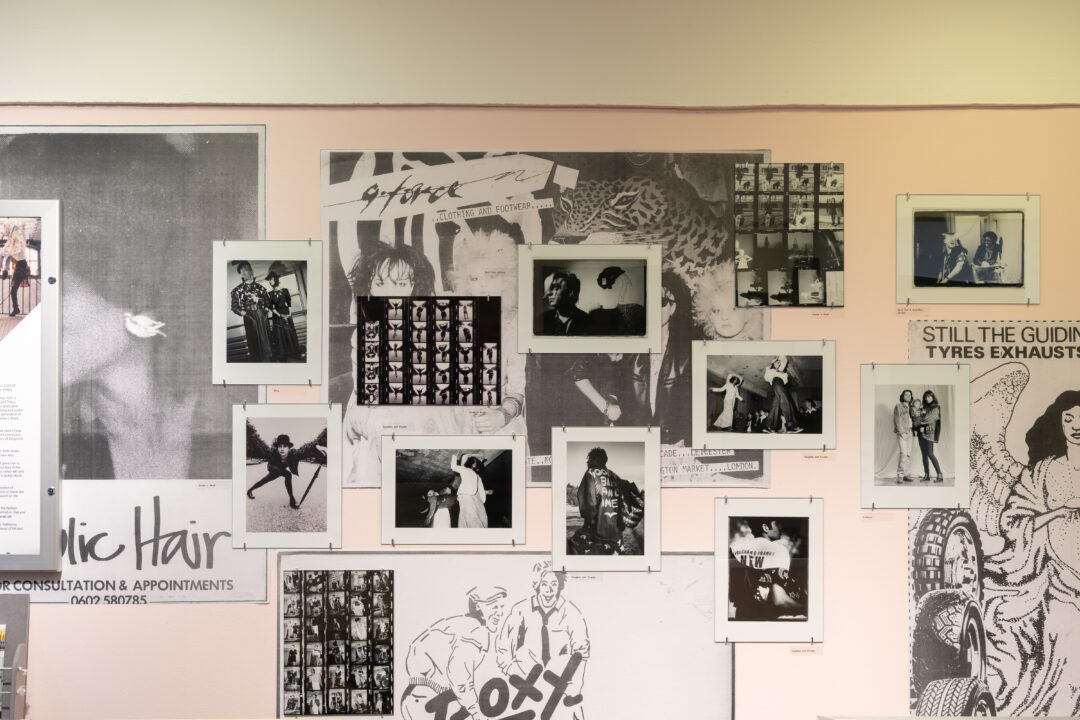

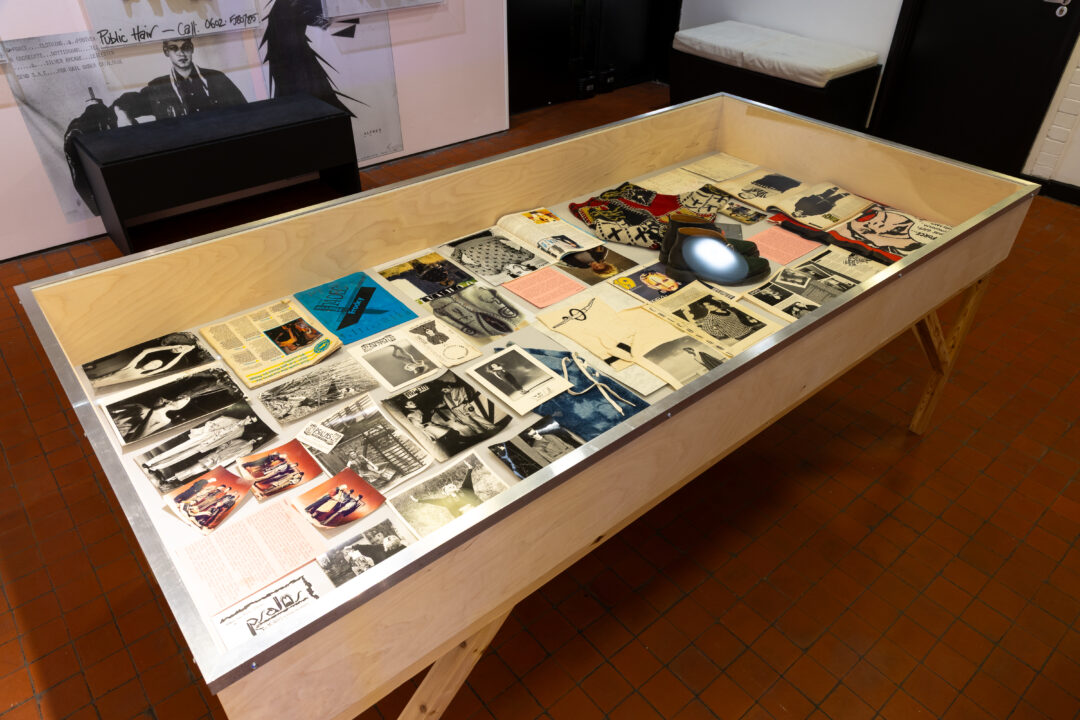
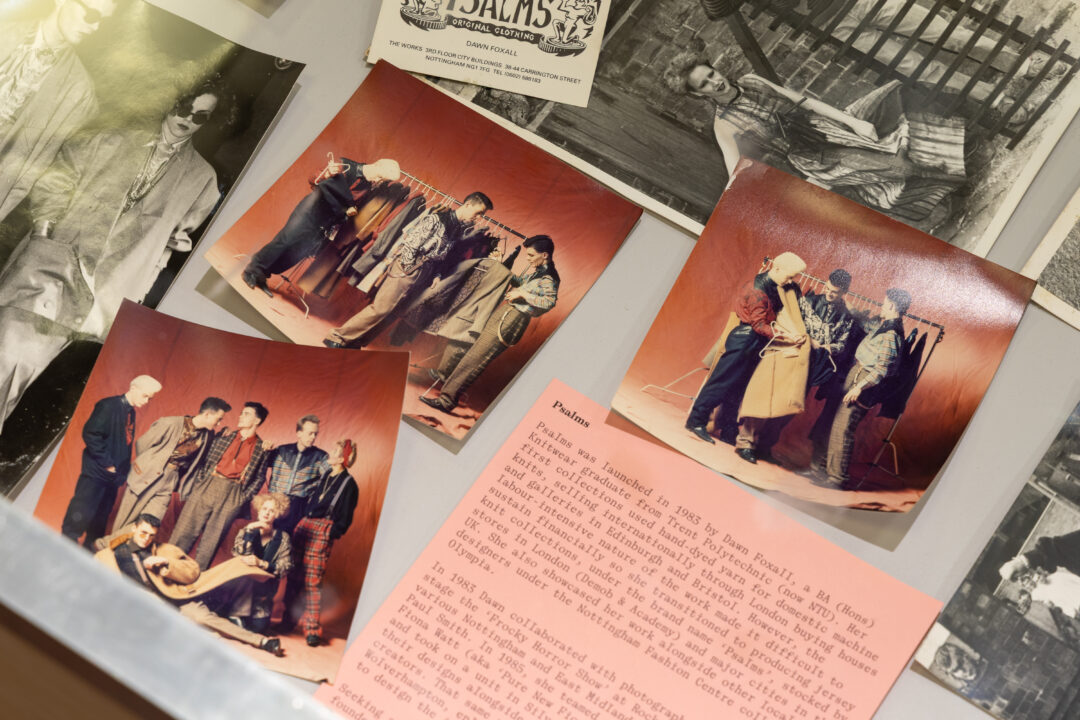
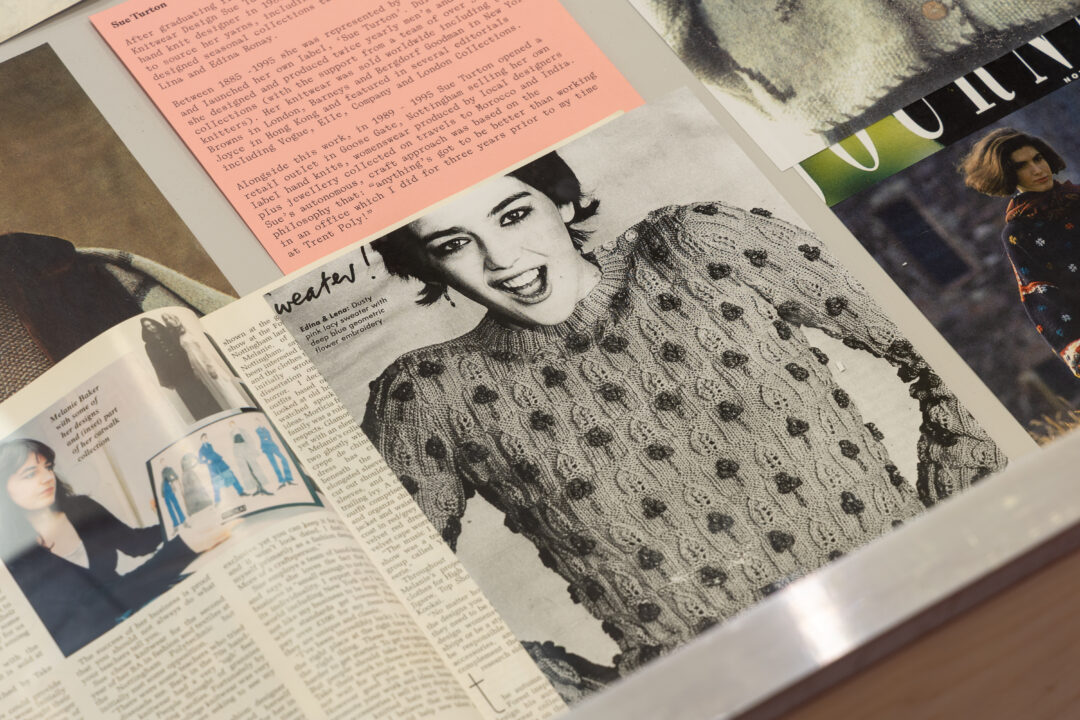
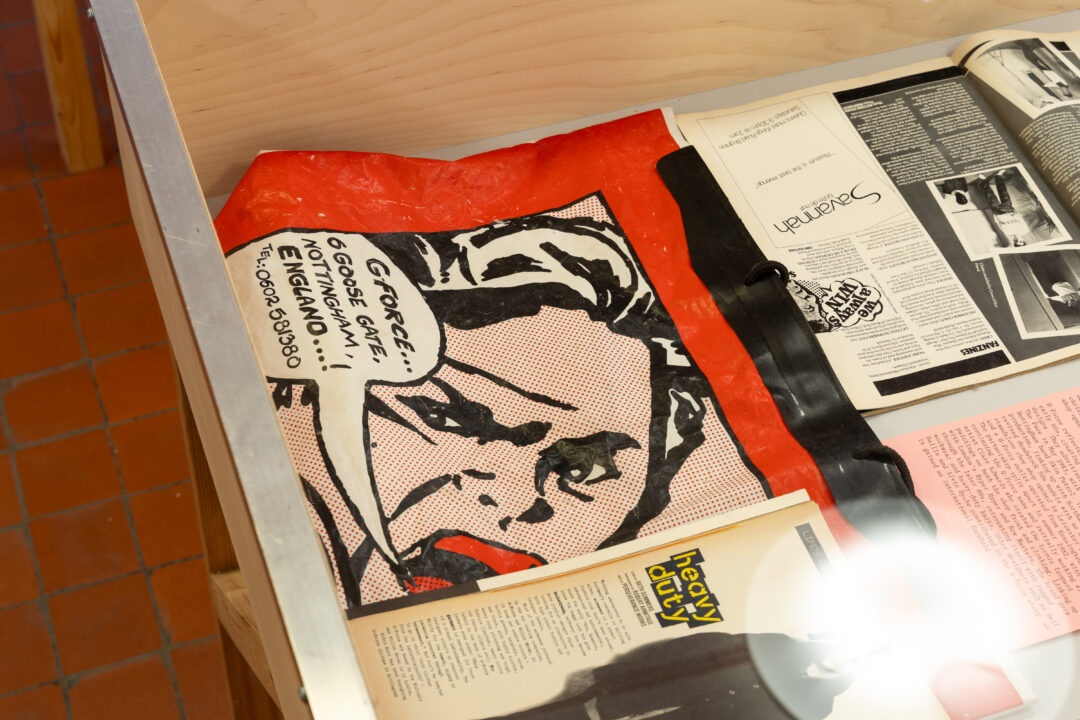
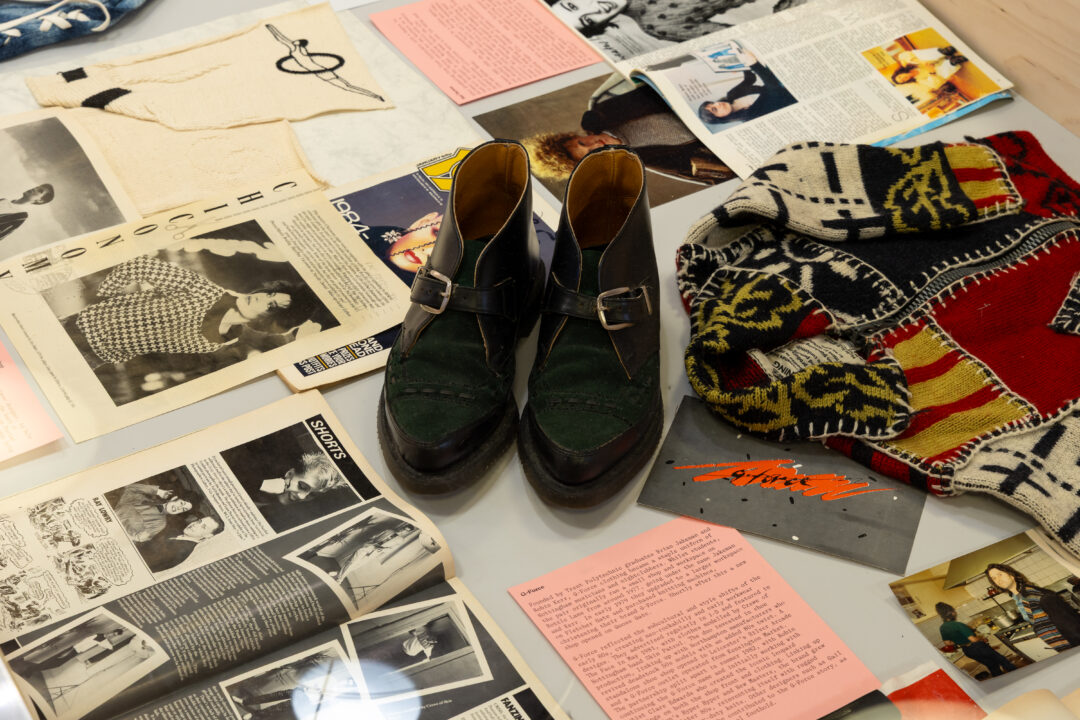
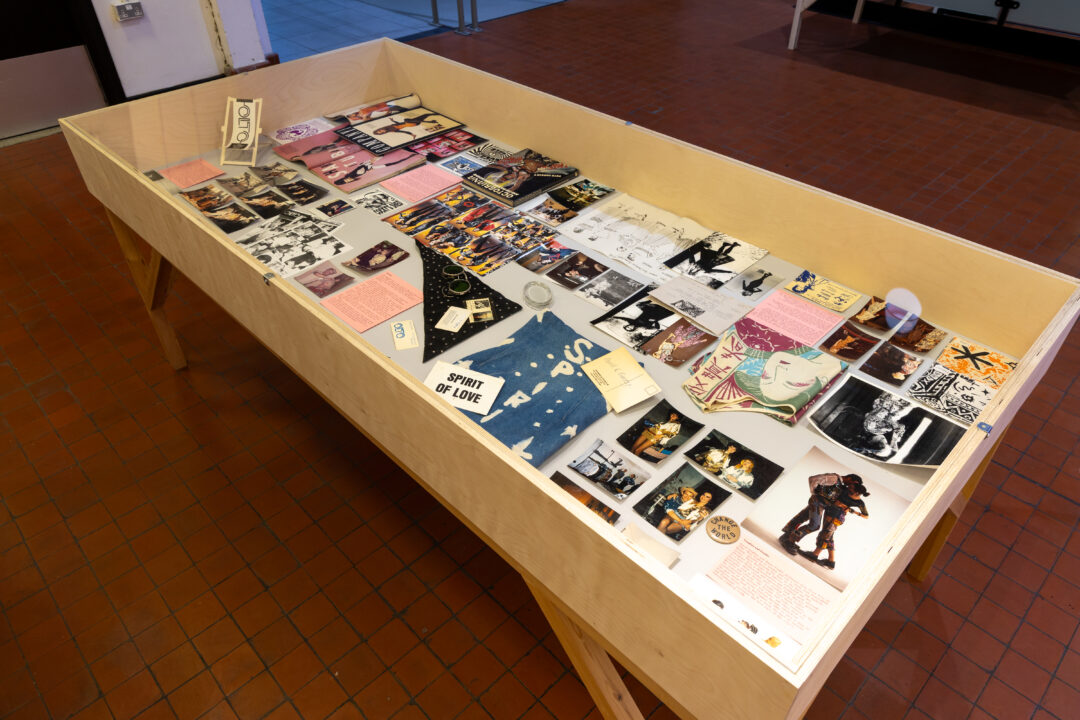
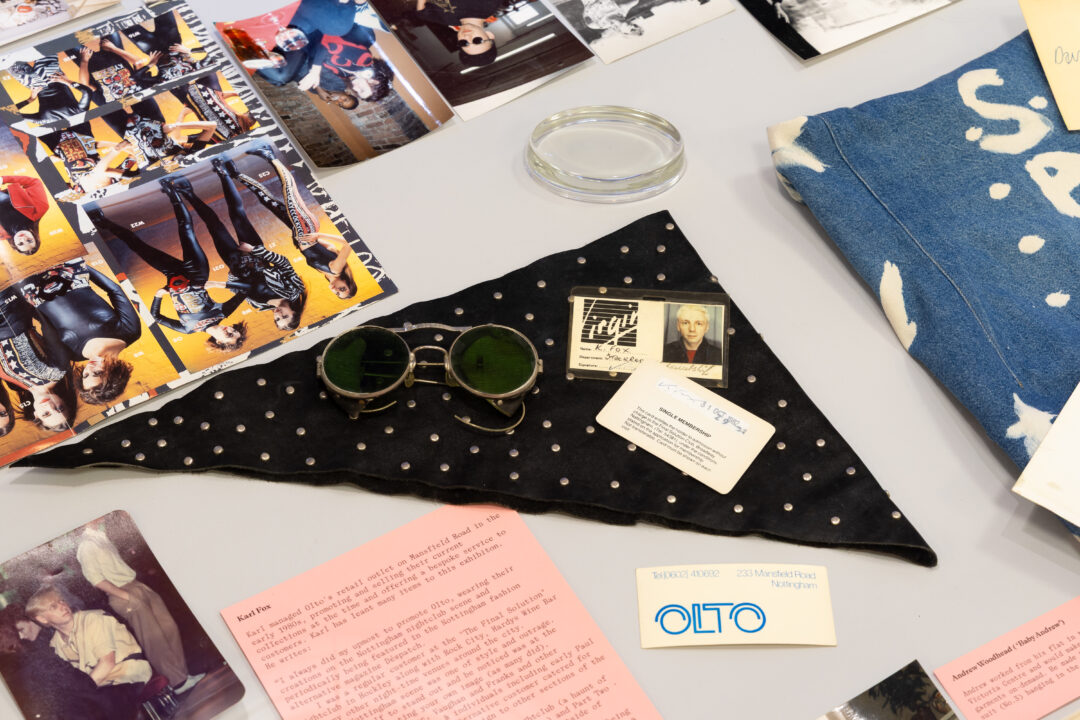
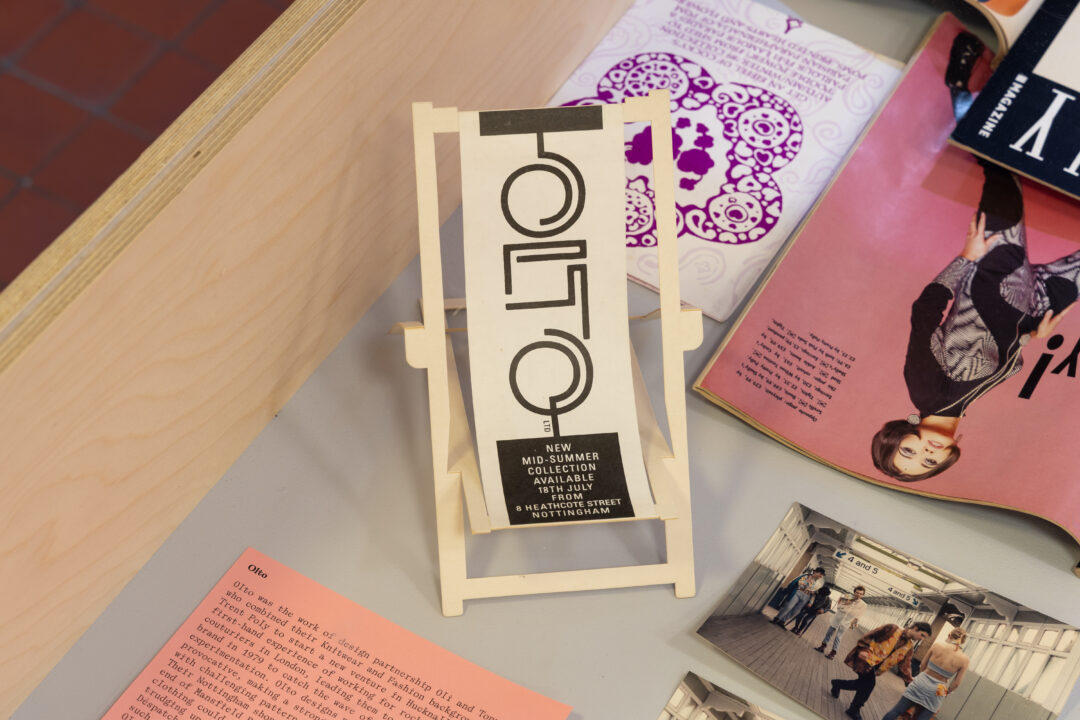


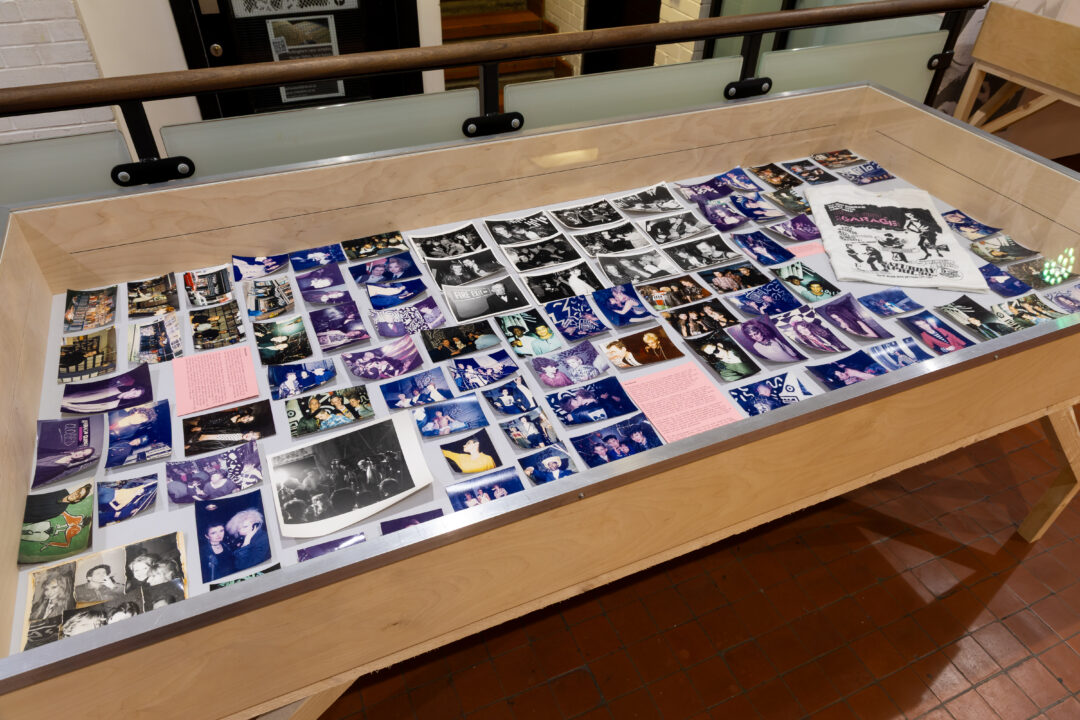

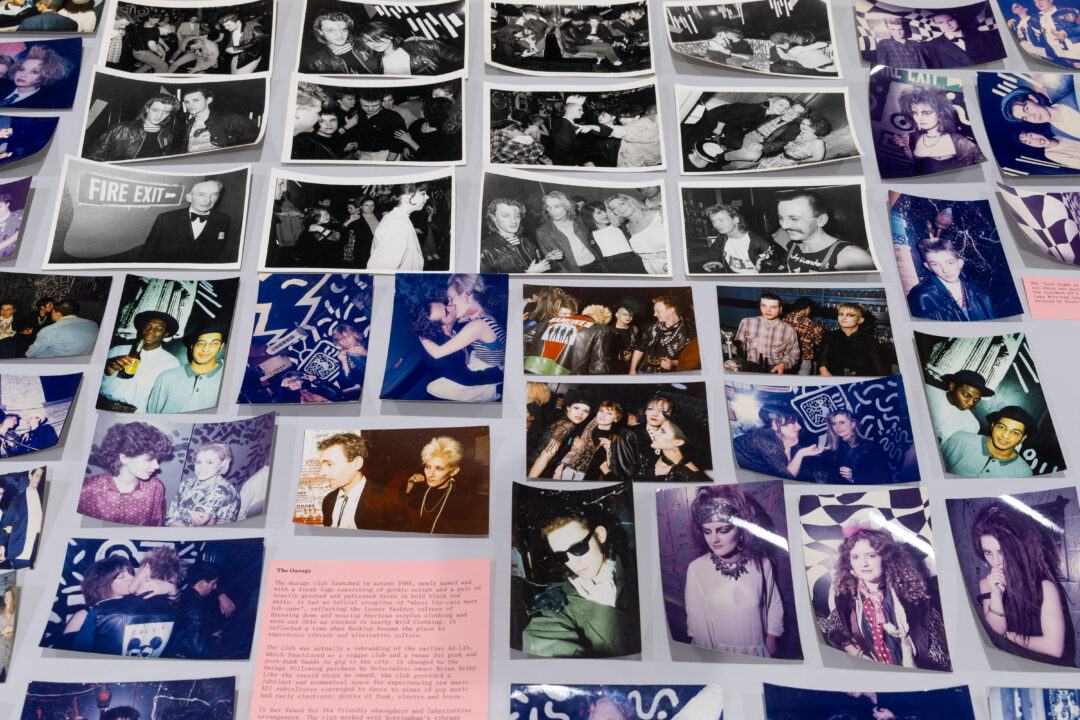
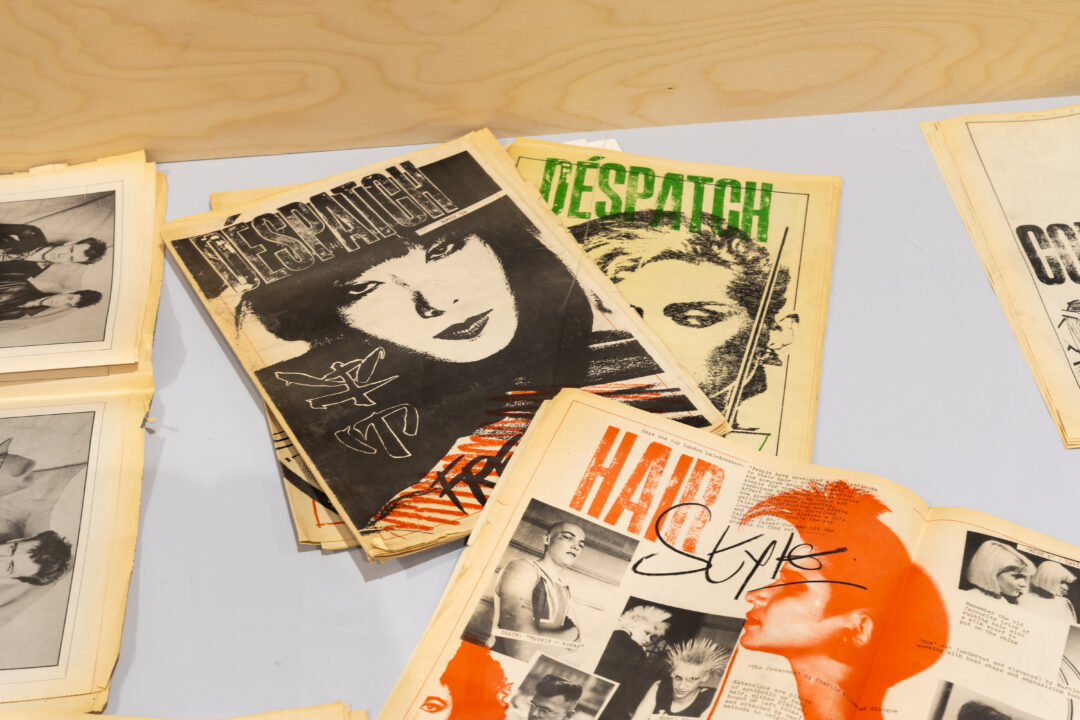
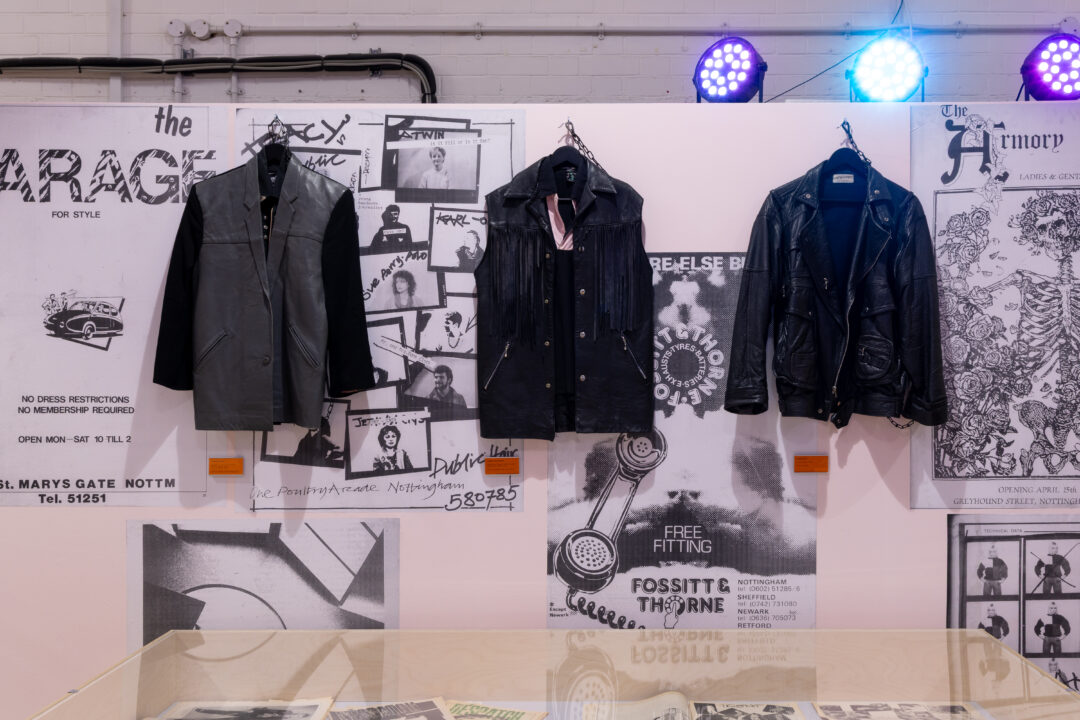
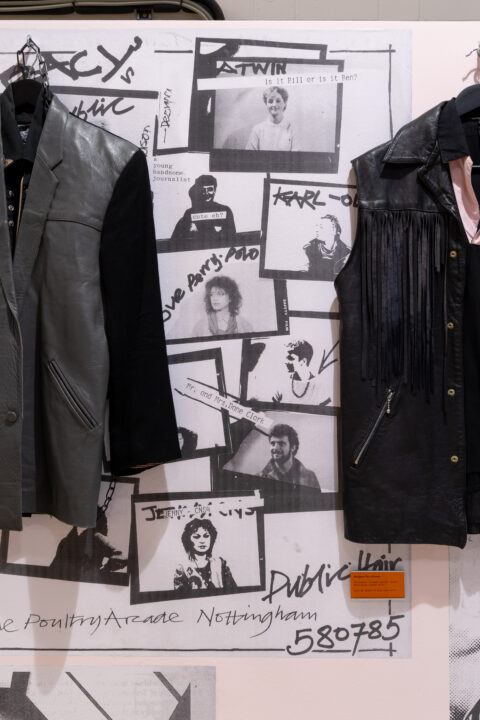

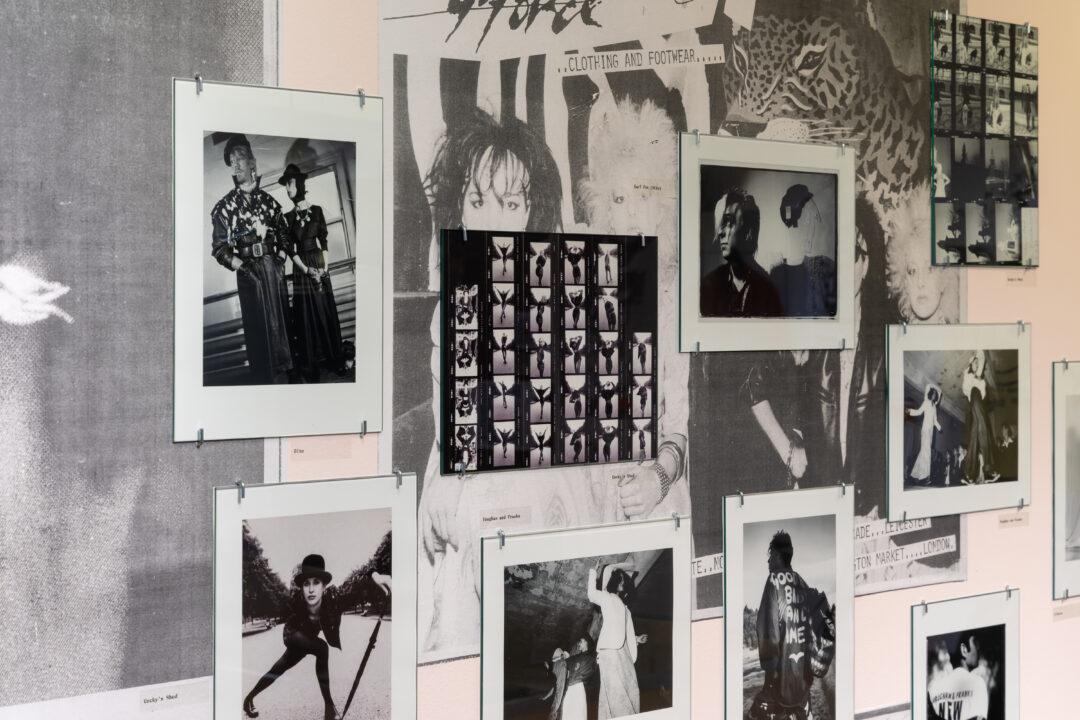
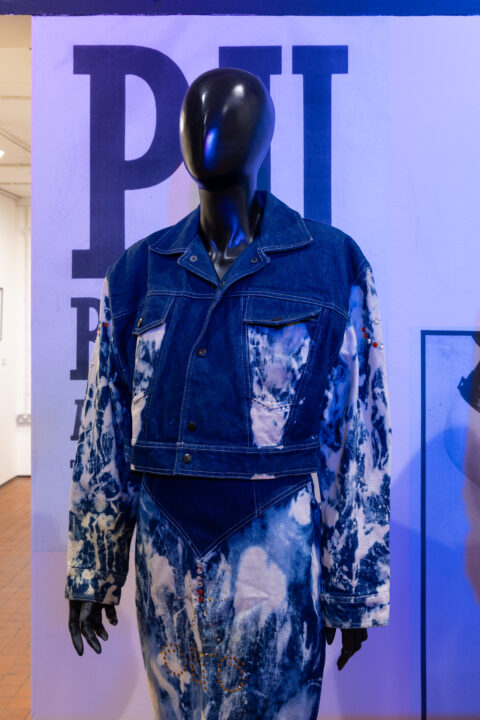
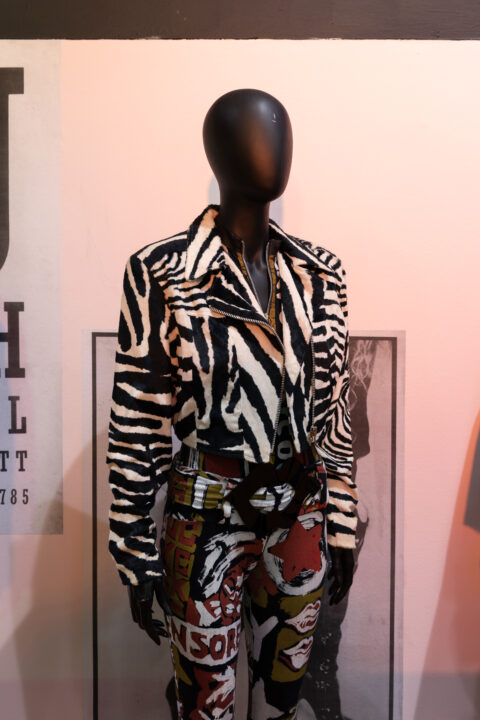
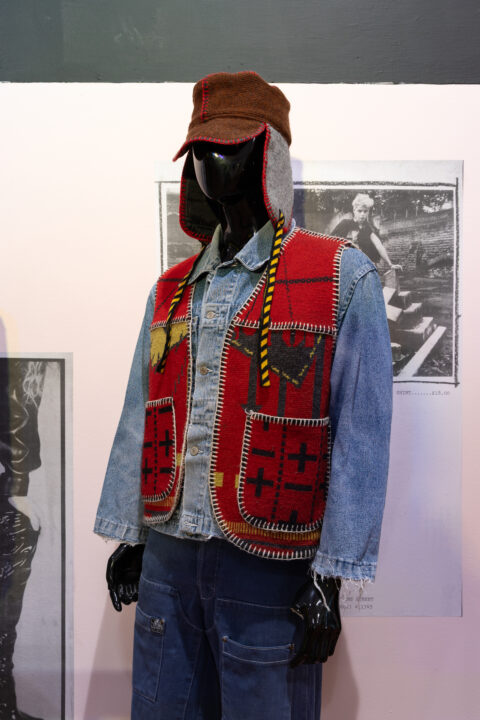
Ian Trowell’s essays
Press
Image: ‘Clockwork Orange’ collection by Olto (now One-BC). Photo by Paul Edmondson, circa 1984.
We’re delighted to invite Hull based The Aimless Archive to deliver the 26th instalment of our Bonington Vitrines programme.
Suggested Starting Points is an exhibition that builds upon a single afternoon The Aimless Archive (TAA) spent in the Bonington Gallery archives.
Each item selected operates as an invitation for the audience to contribute to the exhibition, which can be done via open apertures cut into one of the Vitrines on display. Within this format, TAA aim to question the things that grab attention and what those things can be a catalyst for – reimagining the archive as a place for quick decisions and instinct, and not a place of exhaustion.
This exhibition will expand to include the Bonington Archive Cabinet in the form of Notes Toward Suggested Starting Points, where a collection of papers and notebooks generated by TAA will lay bare the process behind the presentation in the Vitrines.
—
The invitation to TAA to make a project with us follows an extensive (and still ongoing) period of organisation of Bonington Gallery’s own 50+ year archive. By bringing external voices into this work, we hope to analyse, question and potentially disrupt inherited processes and attitudes towards the organisation of historical materials. We hope to explore methods for how archives can be activated in ways that better match their often more subjective origins.






























The Aimless Archive works across text – conversation – performance – collecting. It questions what we keep and what we get rid of by generating starting points for new and collaborative work, building archives as places for reflection and evaluation, and presenting unfinished and ongoing work. Repeatedly working in the area where artists and audiences meet, outcomes often take the form of (a book – a box – a by-product) or (a workshop – a scanned doc – a re-drafted piece of writing).
The Aimless Archive on Instagram.

Bonington Gallery is pleased to present an exhibition of paintings by Nottingham based artist Shahnawaz Hussain which capture key buildings and landmarks across Nottingham and the wider county.
Based in Nottingham, Shahnawaz Hussain is a self-taught artist who has been practicing and making art for the past 8 years.
Mostly working in acrylic, oil and watercolour; Shahnawaz travels across Nottinghamshire visiting locally significant buildings and landmarks that either possess a Nottingham Civic Society plaque or are otherwise connected with a famous Nottingham personality or lost industry. Some paintings also depict places and locations that are personal to the artist, such as his house.
In his experimental artworks, form, colour and texture are interwoven and applied via a broad range of perspective techniques, in turn exploring meaning, scale and depth-of-vision to reveal in great detail the underlying nature and composition of his subjects.


Shahnawaz has a particular interest in buildings from the ages of high architecture, particularly those from Victorian, Georgian, Tudor, Arts and Crafts and Baroque styles.
Having lived in Nottingham for most of his adult life he has observed the evolution of the city and wider county over many years, witnessing heritage architecture being irreplaceably lost, or used for purposes different to what was originally intended.
Shahnawaz is an Alumni Fellow at Nottingham Trent University, graduating in 1999 in MSc Multimedia Engineering. His personal website can be visited here, and more information about his practice can be read via this downloadable PDF document created by the artist.














Presented alongside Onyeka Igwe’s solo exhibition history is a living weapon in yr hand, discover a selection of materials selected by the artist, that highlight key women who embraced creative activities to challenge imperialism and imagine new Pan-African realities.
In looking into the history of Pan-Africanism from the 1930s up until Howard Macmillan’s famous Winds of Change speech in 1960, many famed and celebrated men emerge as having spent time in the UK before rising to prominence in Africa, the Caribbean and South Asia as political leaders. The women are lesser known and celebrated, but figures like Amy Ashwood Garvey, Katherine Dunham, Una Marson, Sylvia Wynter and Funmilayo Ransome Kuti played their part using music, poetry, dance and theatre to challenge imperialism and imagine new Pan-African futures.
Join us for a first look round the exhibition on Friday 12 January from 6–8 pm.
Book your free ticket

















Images by Jules Lister
Onyeka Igwe is a London born, and based, moving image artist and researcher. Her work is aimed at the question: how do we live together? Not to provide a rigid answer as such, but to pull apart the nuances of mutuality, co-existence and multiplicity.
Onyeka’s practice figures sensorial, spatial and counter-hegemonic ways of knowing as central to that task. For her, the body, archives and narratives both oral and textual act as a mode of enquiry that makes possible the exposition of overlooked histories. She has had solo/duo shows at MoMA PS1, New York (2023), High Line, New York (2022), Mercer Union, Toronto (2021), Jerwood Arts, London (2019) and Trinity Square Video, London (2018). Her films have screened in numerous group shows and film festivals worldwide.
Currently, she is Practitioner in Residence at the University of the Arts London and she will participate in the group show ‘Nigeria Imaginary’ in the national pavilion of Nigeria at the upcoming 60th Venice Biennial in 2024. She was awarded the New Cinema Award at Berwick Film and Media Arts Festival 2019, 2020 Arts Foundation Fellowship, 2021 Foundwork Artist Prize and has been nominated for the 2022 Jarman Award and Max Mara Artist Prize for Women. Onyeka is represented by Arcadia Missa Gallery.

To accompany The Art Schools of the East Midlands exhibition in our Gallery by John Beck and Matthew Cornford, our Vitrines and Foyer will feature historical materials relating to the history of Nottingham School of Art & Design.
The School was first established in 1843, and counts painter Dame Laura Knight, Desperate Dan creator Dudley D. Watkins, BAFTA nominated director Jonathan Glazer, comedian Matt Berry and visual artist Hetain Patel amongst its notable alumni.
Come along to discover photographs, artefacts, aural histories, press cuttings and more from the art school’s rich 180-year history. Uncover some of the lesser known histories, and hear memories from those who worked and studied here over the years.
This exhibition has been assisted by Researcher & Assistant Curator: Lee Chih Han, Art Museum and Gallery Studies placement from University of Leicester.
























Photographs by Jules Lister
Come along to our launch night on Thursday 21 September, 6 pm – 8 pm for a first look round, alongside Art Schools of the East Midlands in the Gallery.
This exhibition explores the rich history of Nottingham Women’s Centre and the fight for women’s rights in the city.
Starting life in a living room during the second wave of feminism in 1971, Nottingham Women’s Centre is one of the oldest organisations of its kind in the country. It was created to support women and fight for equal pay; education and job opportunities; an end to homophobic discrimination; and an end to violence against women – battles still being fought to this day.
Come along to see material from the Nottingham Women’s Library archives, protest placards from Reclaim the Night marches, and more.
Curated by Diana Ali.































Come along to our launch night on Friday 24 March, 6 pm – 8 pm for a first look round the exhibition, alongside Emily Andersen: Somewhere Else Entirely in the Gallery. There will be free food from 6 pm and a performance from the United Voices Choir at 7 pm.